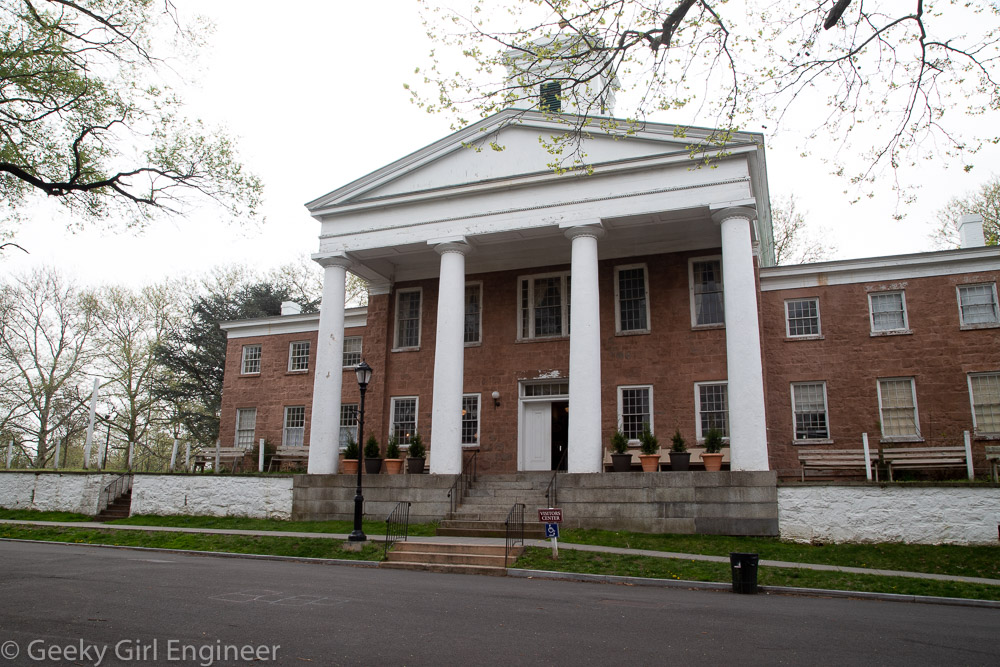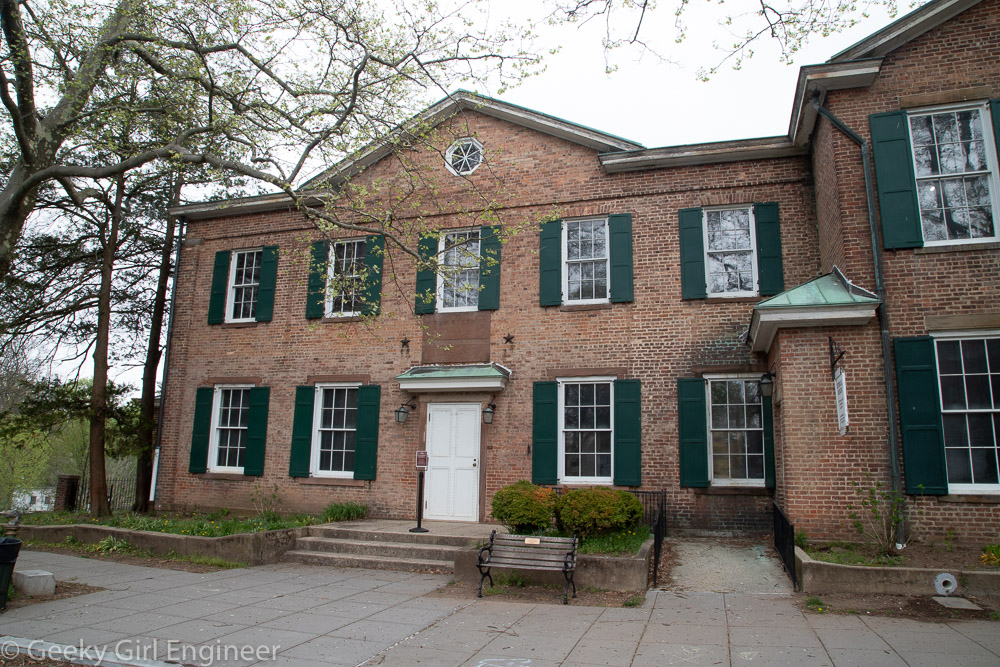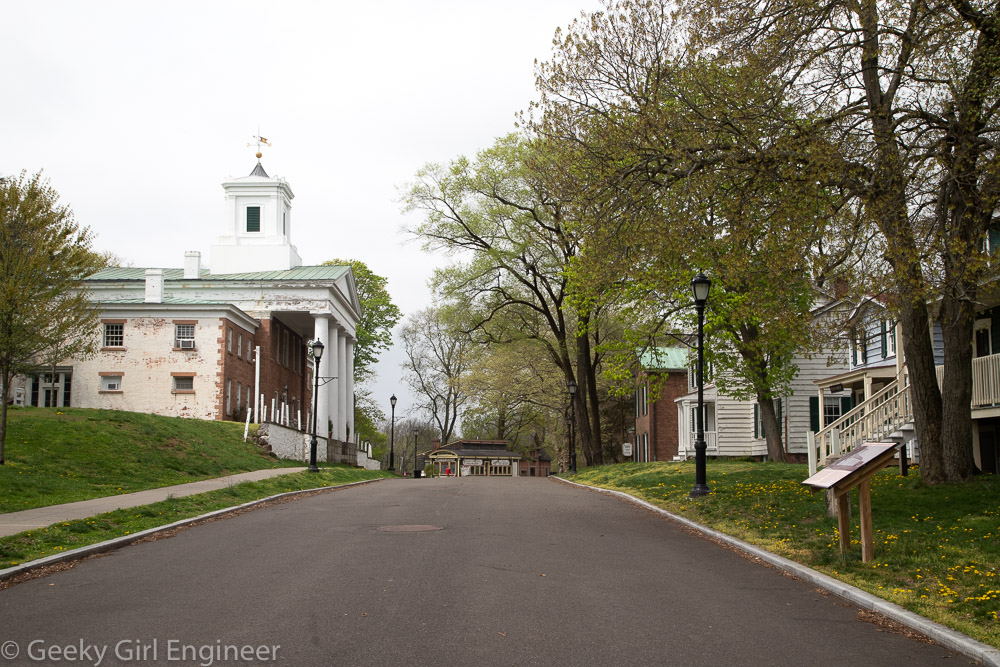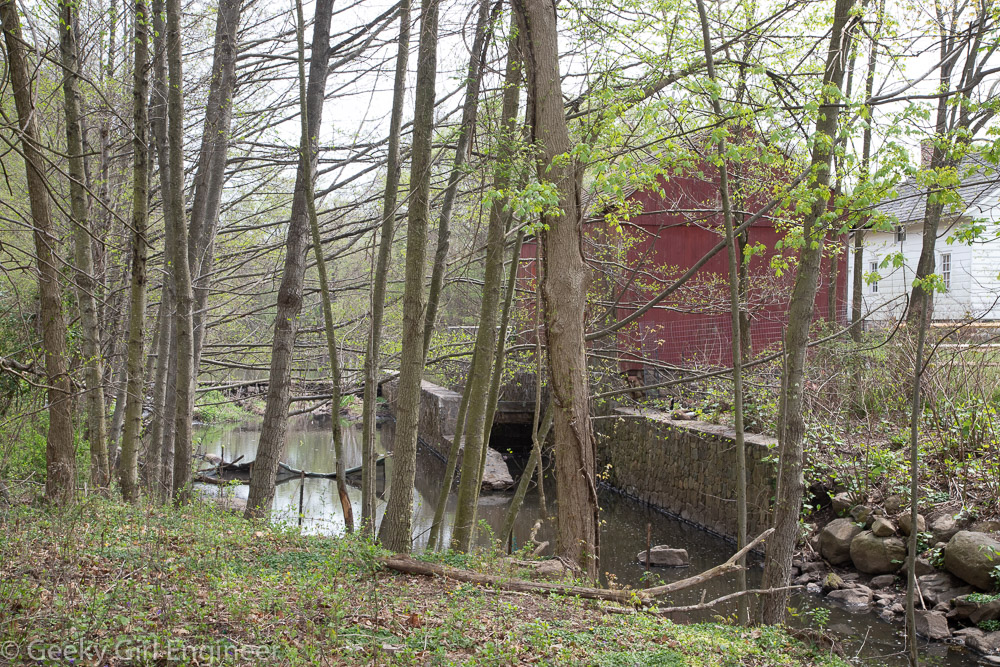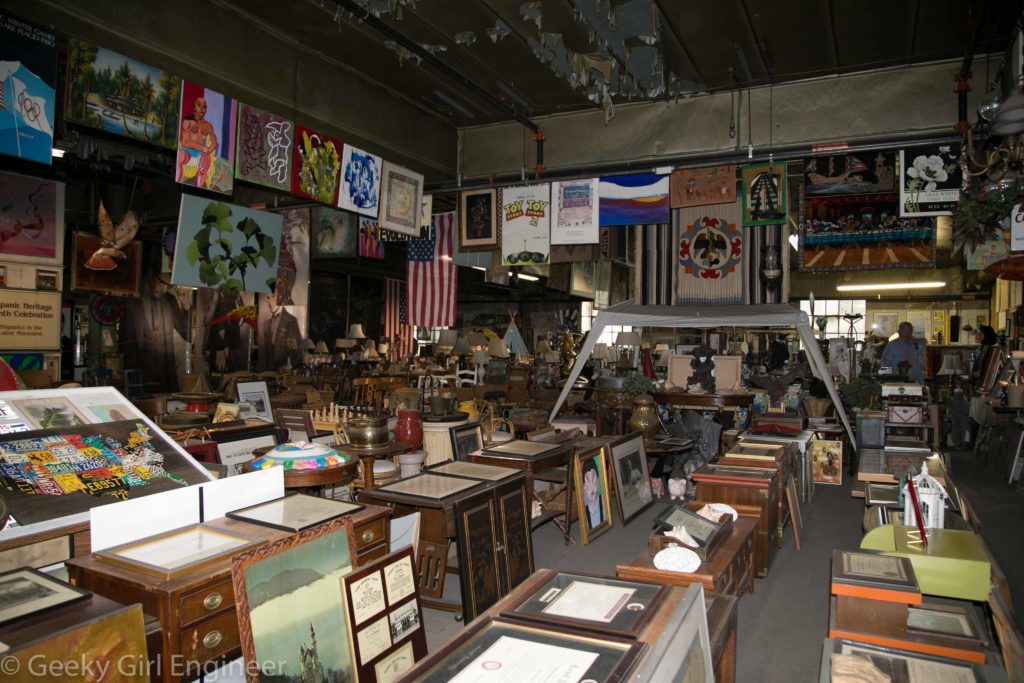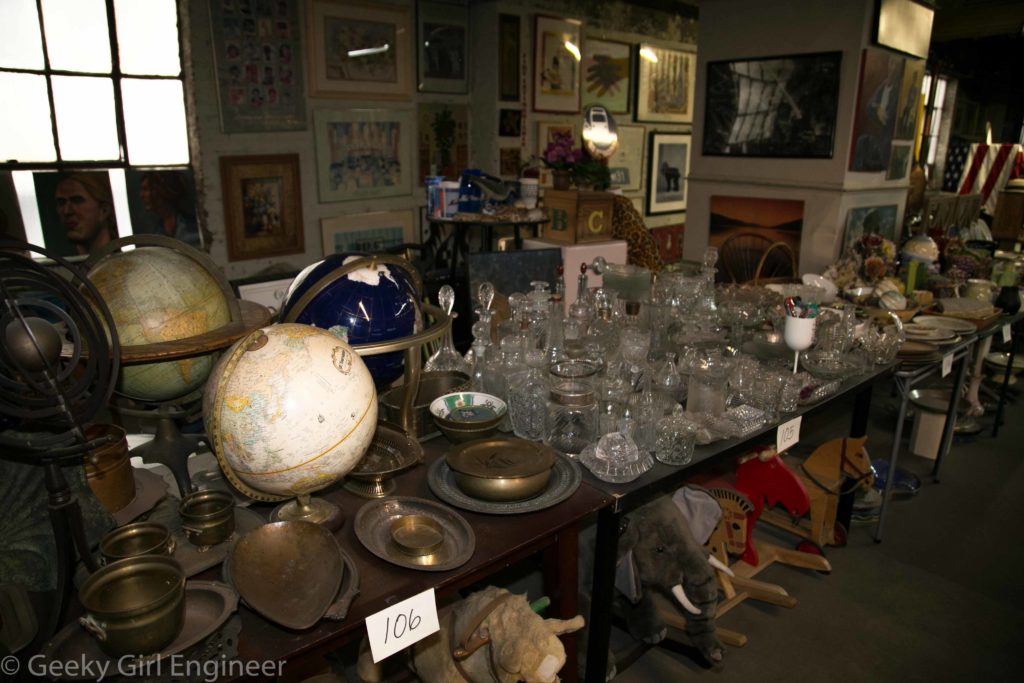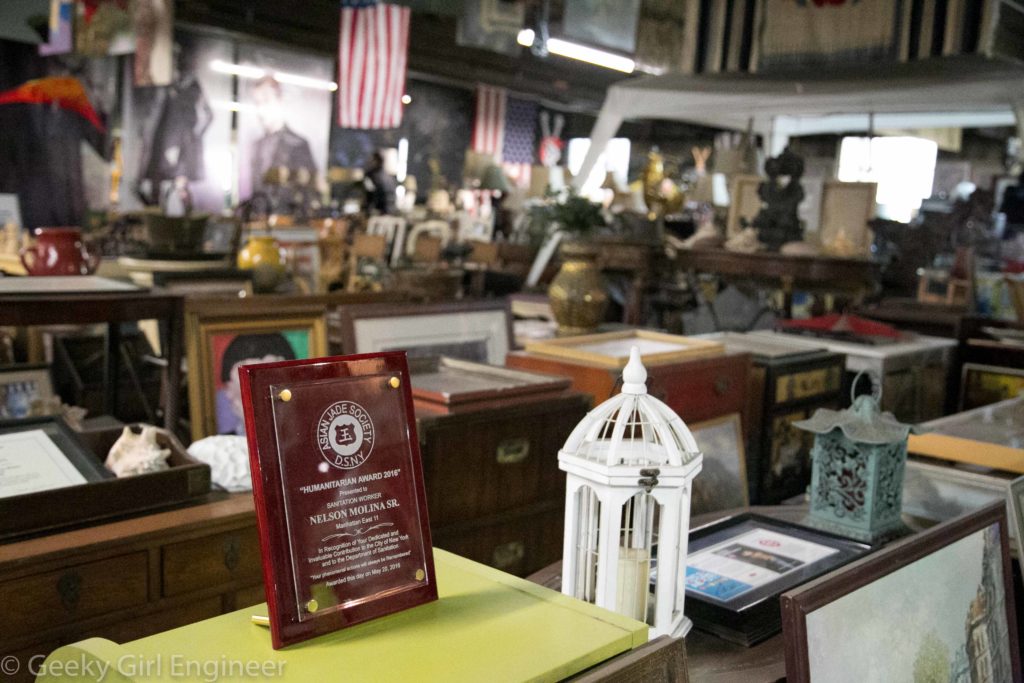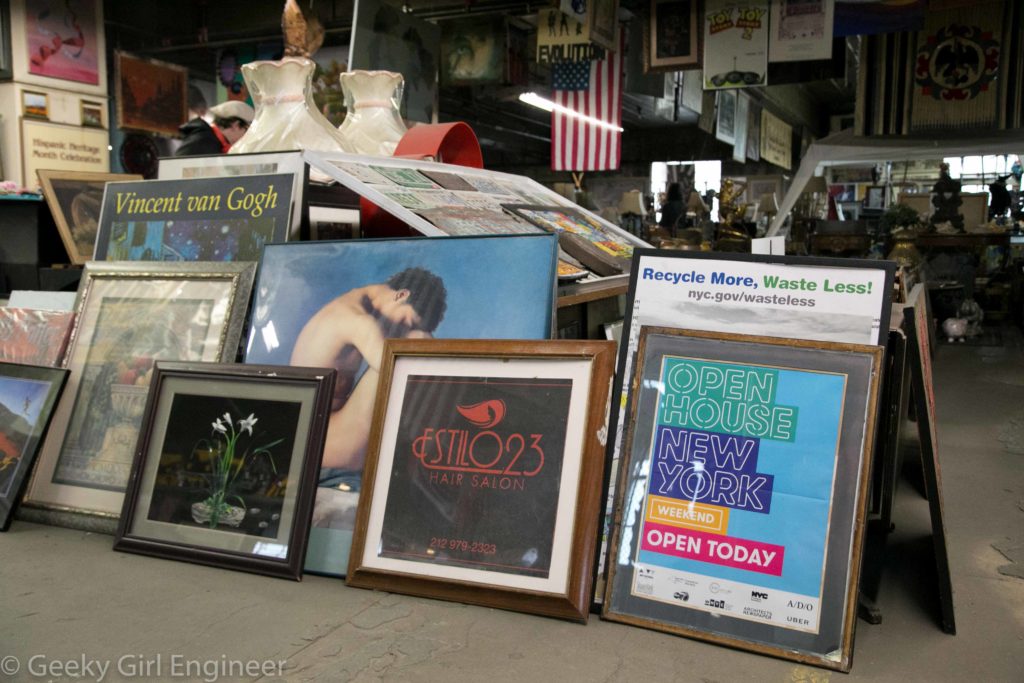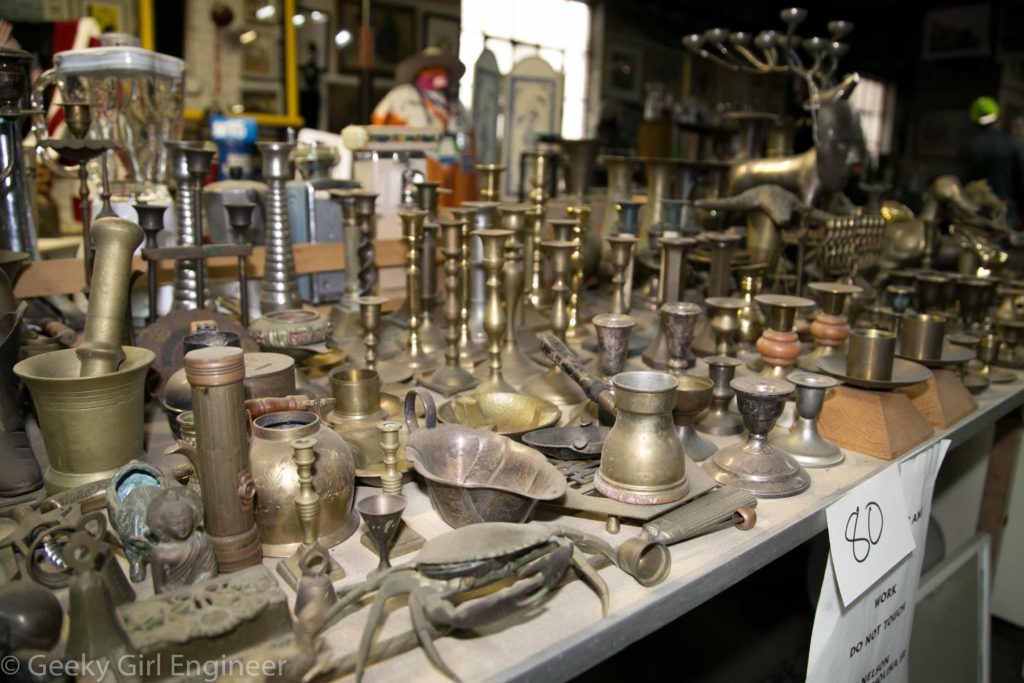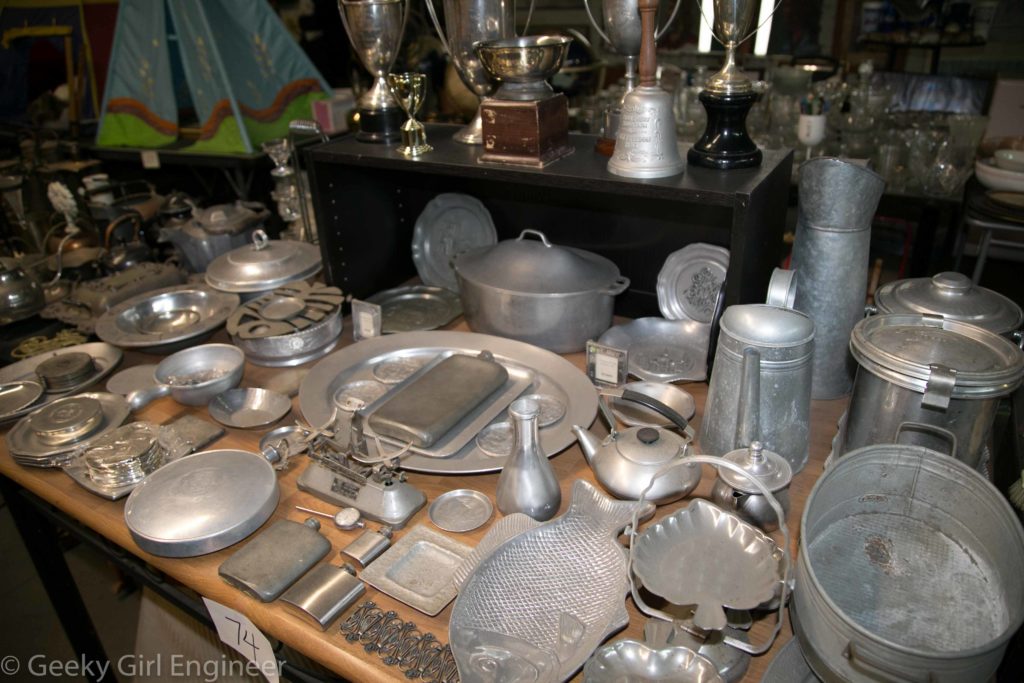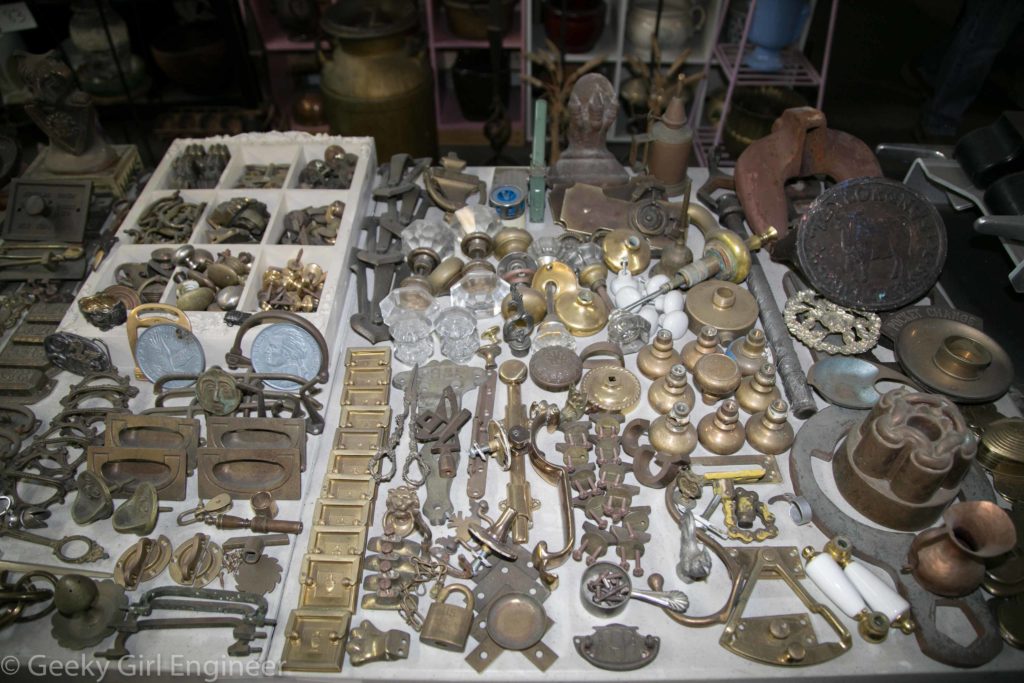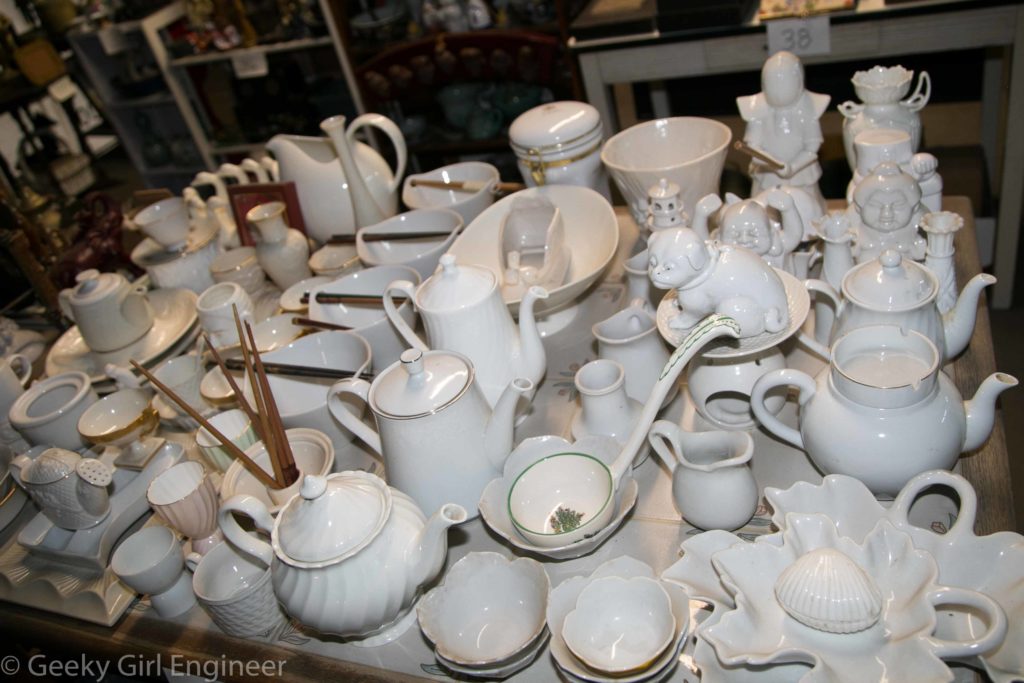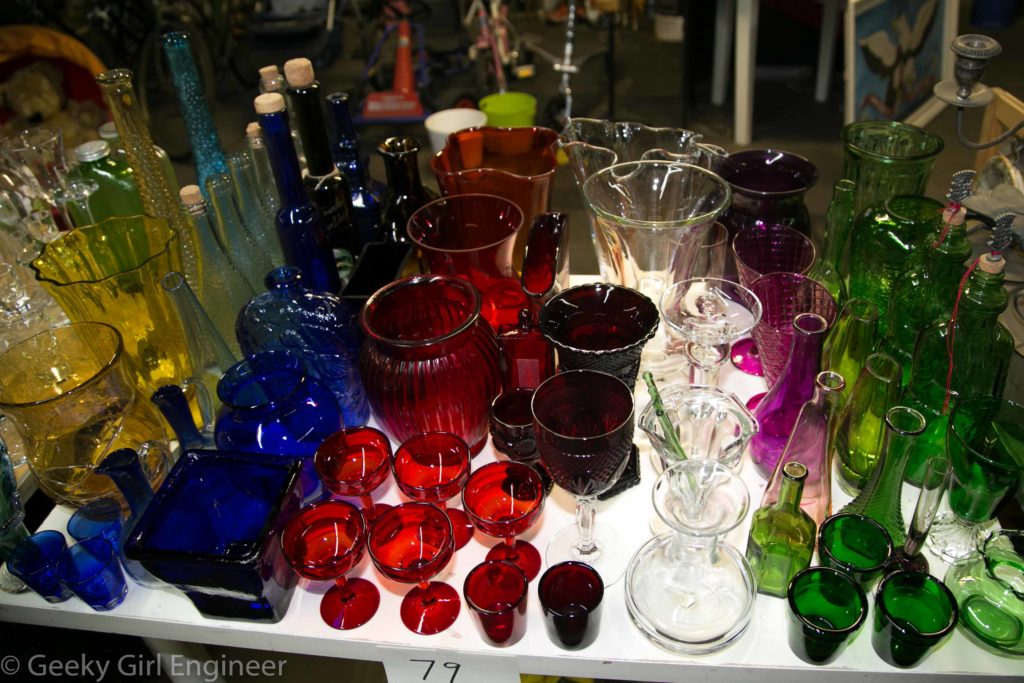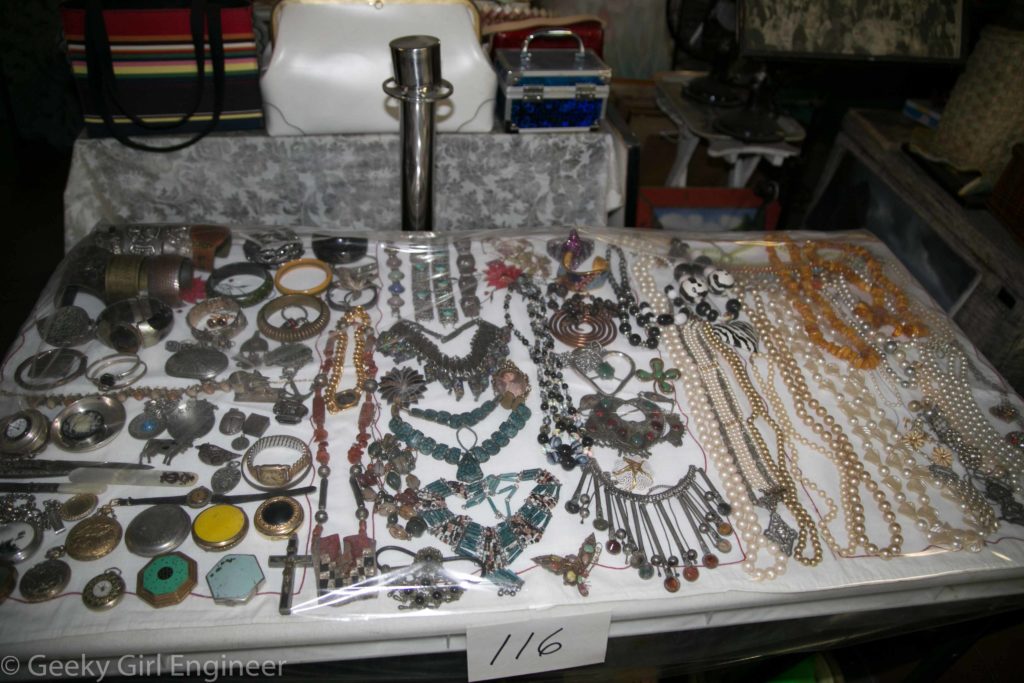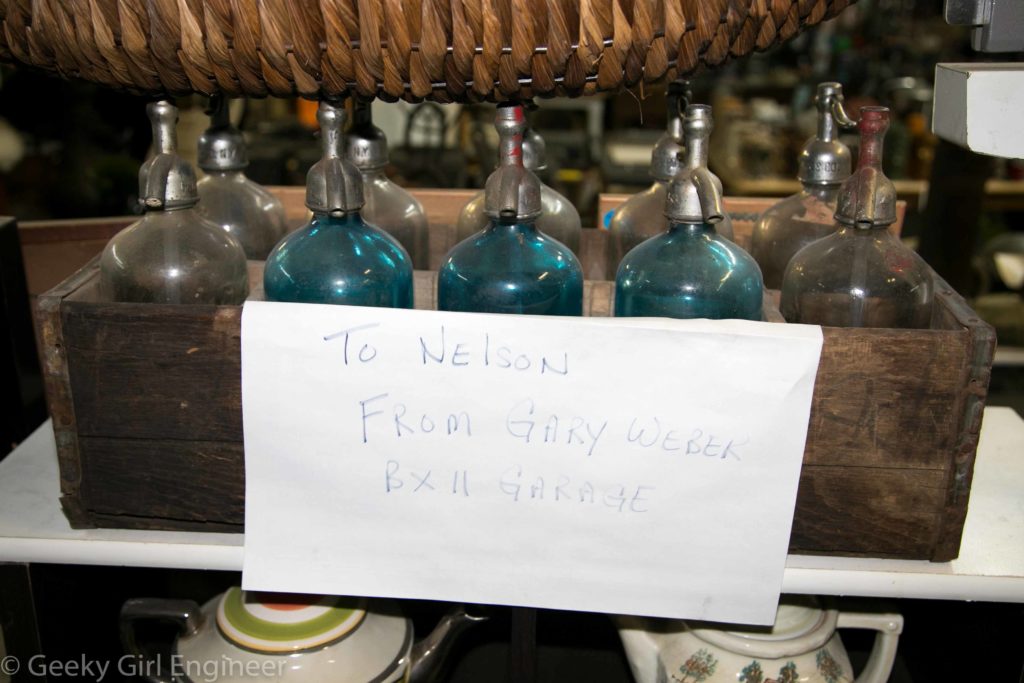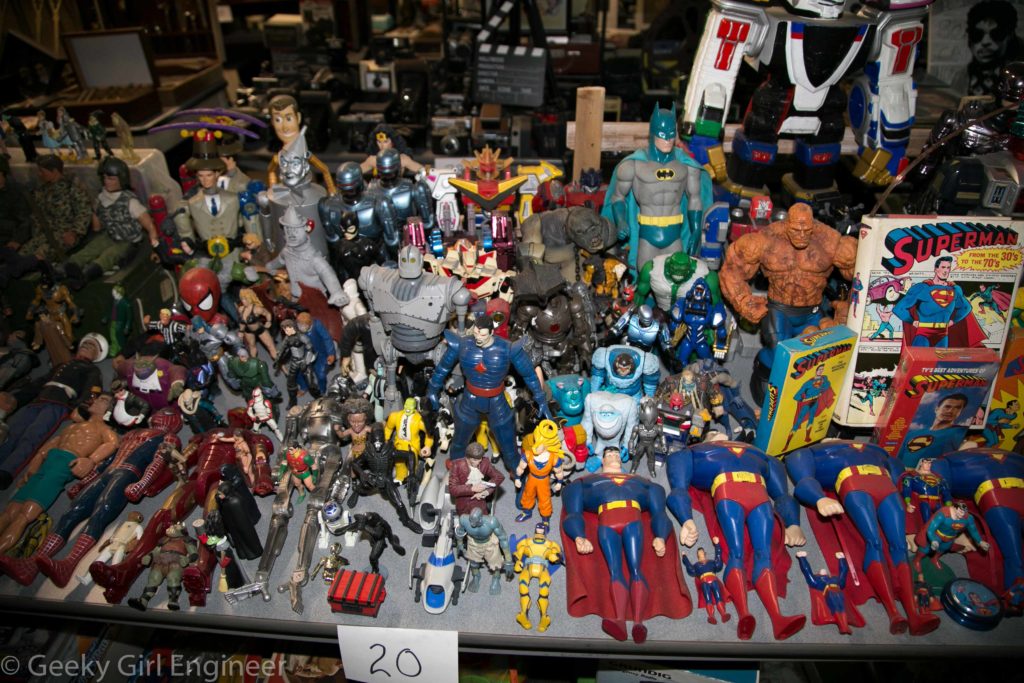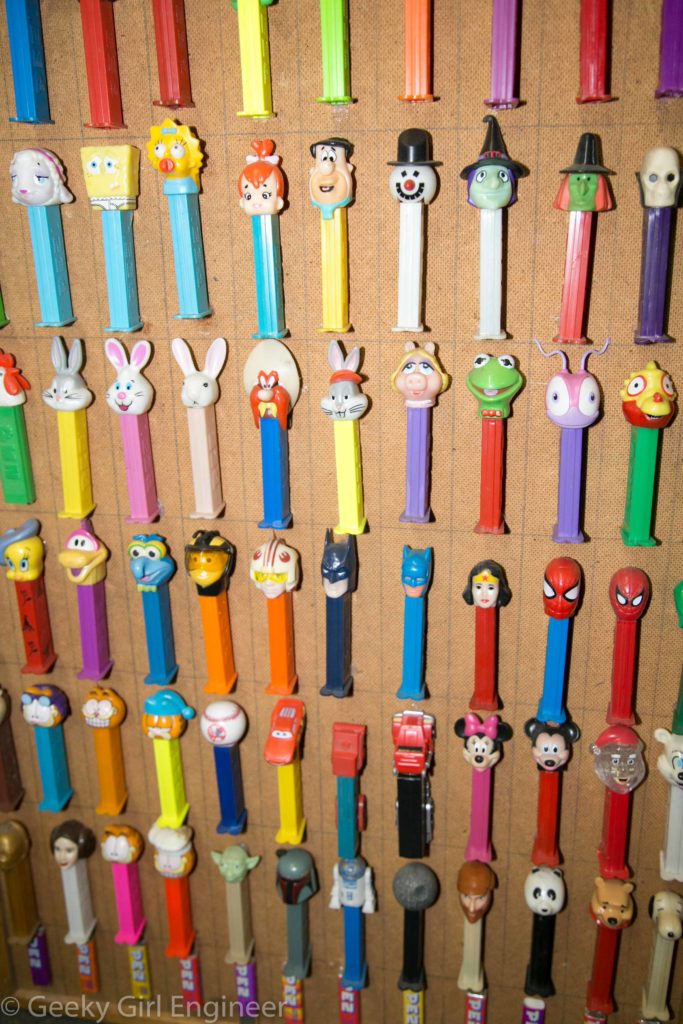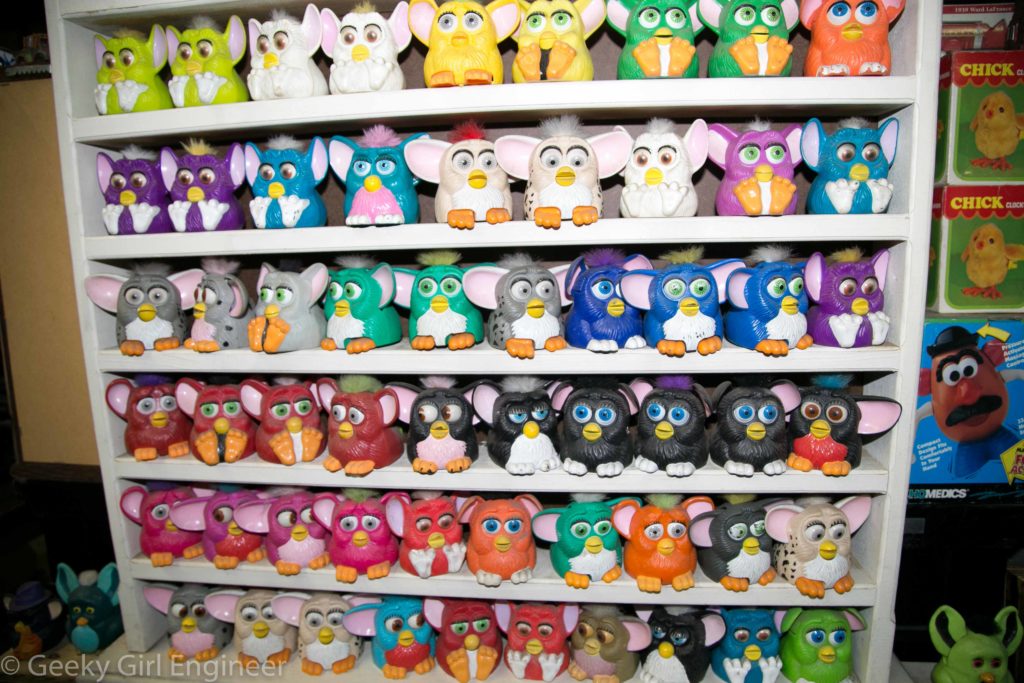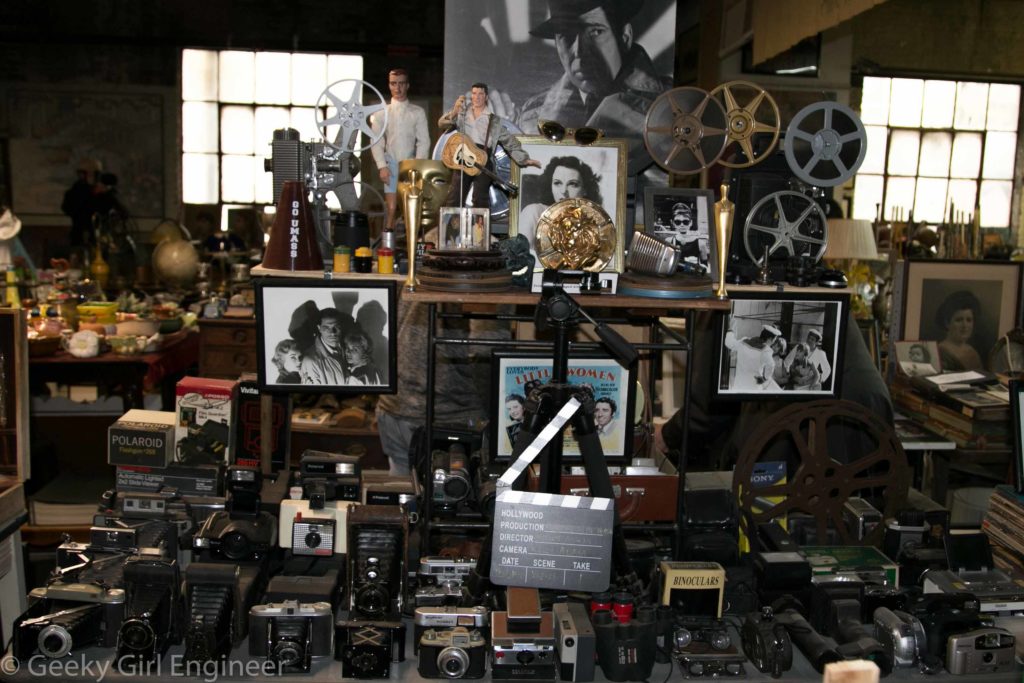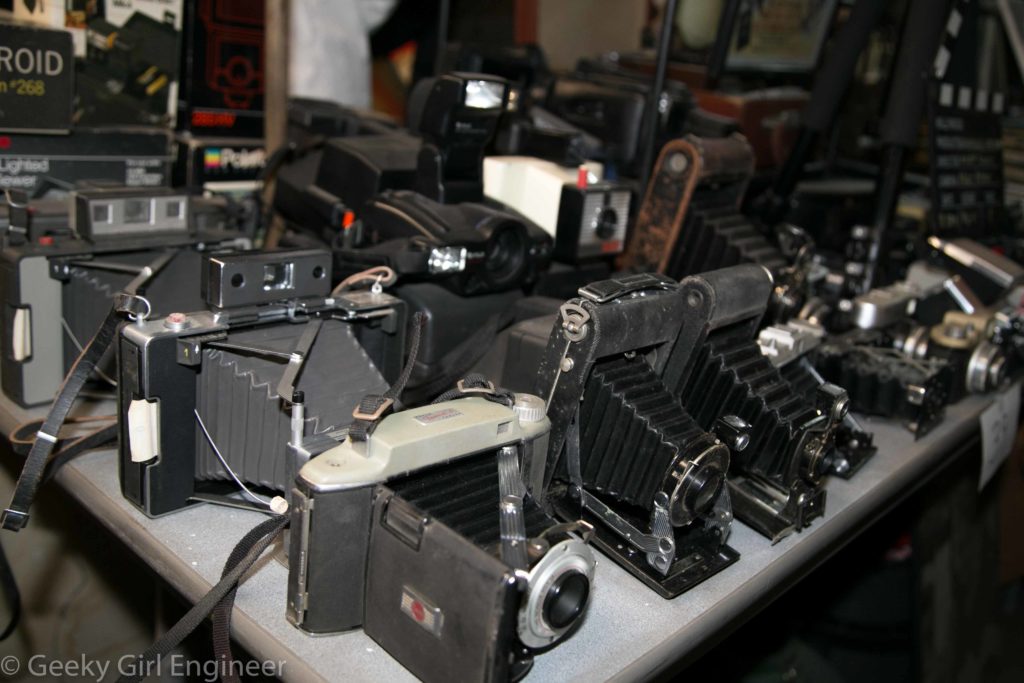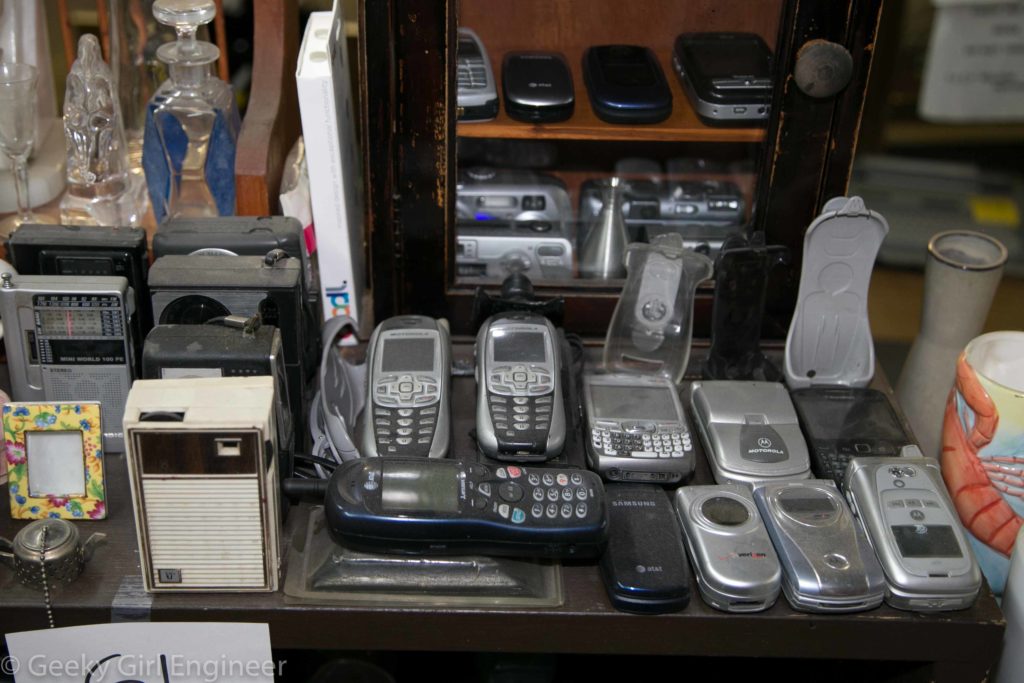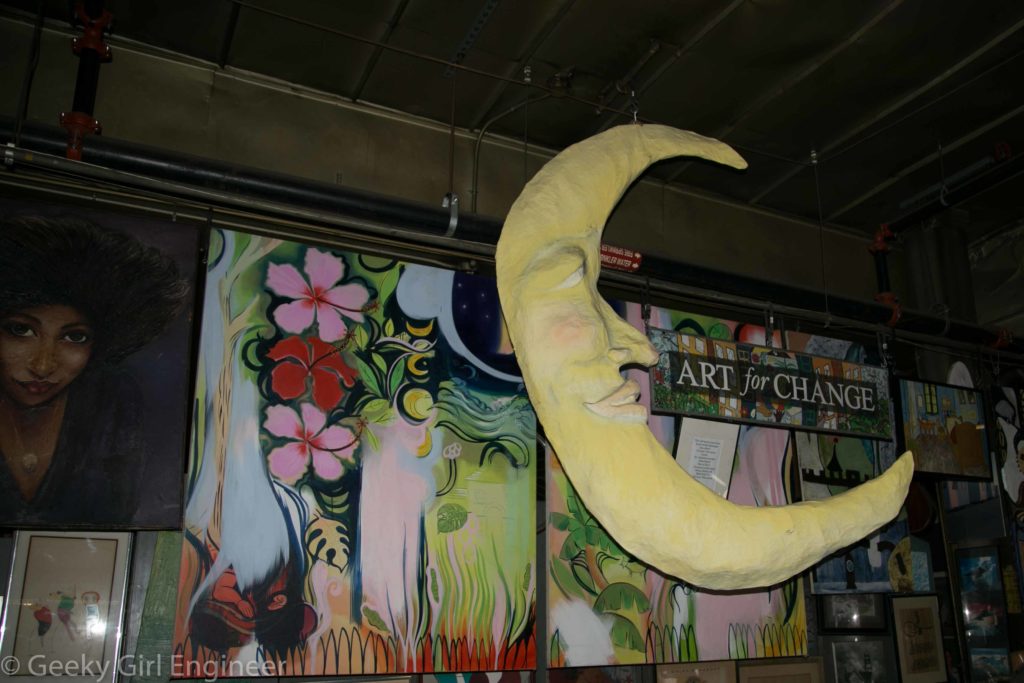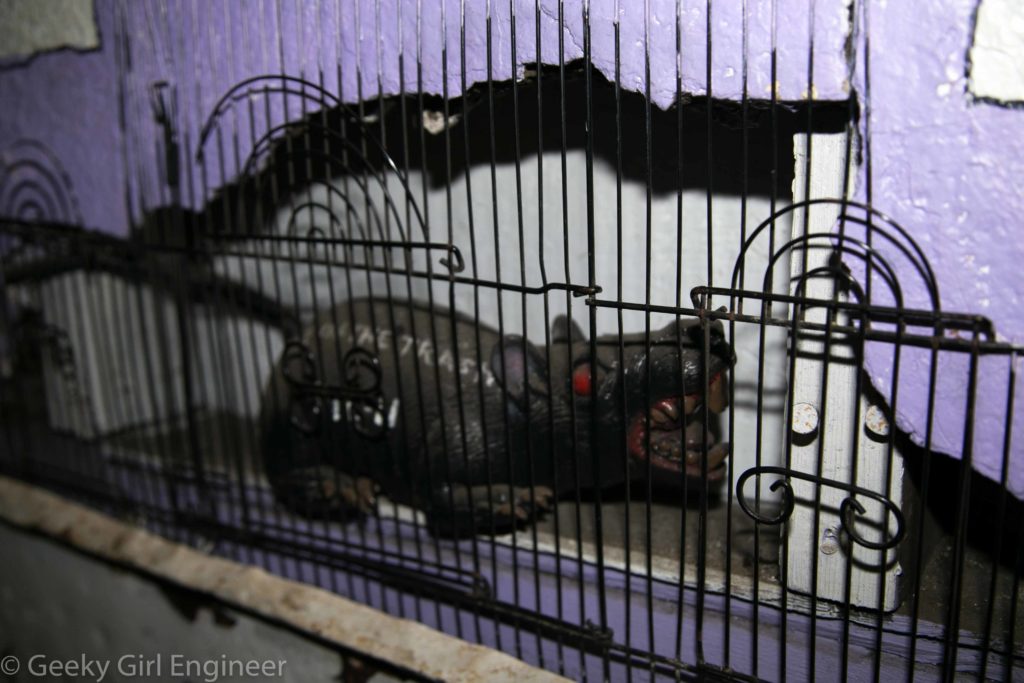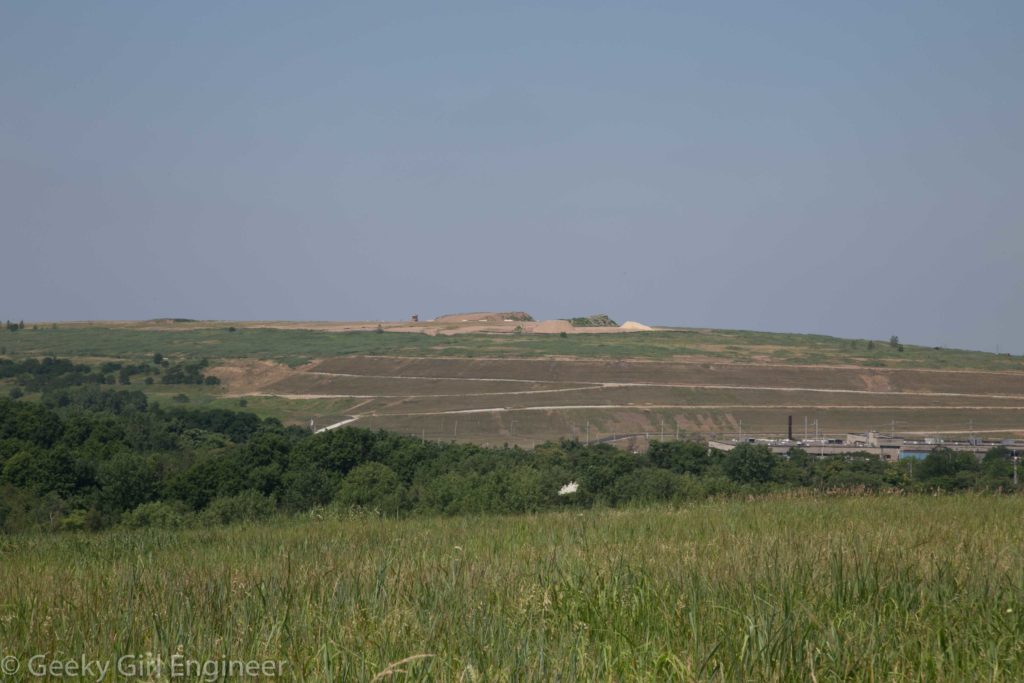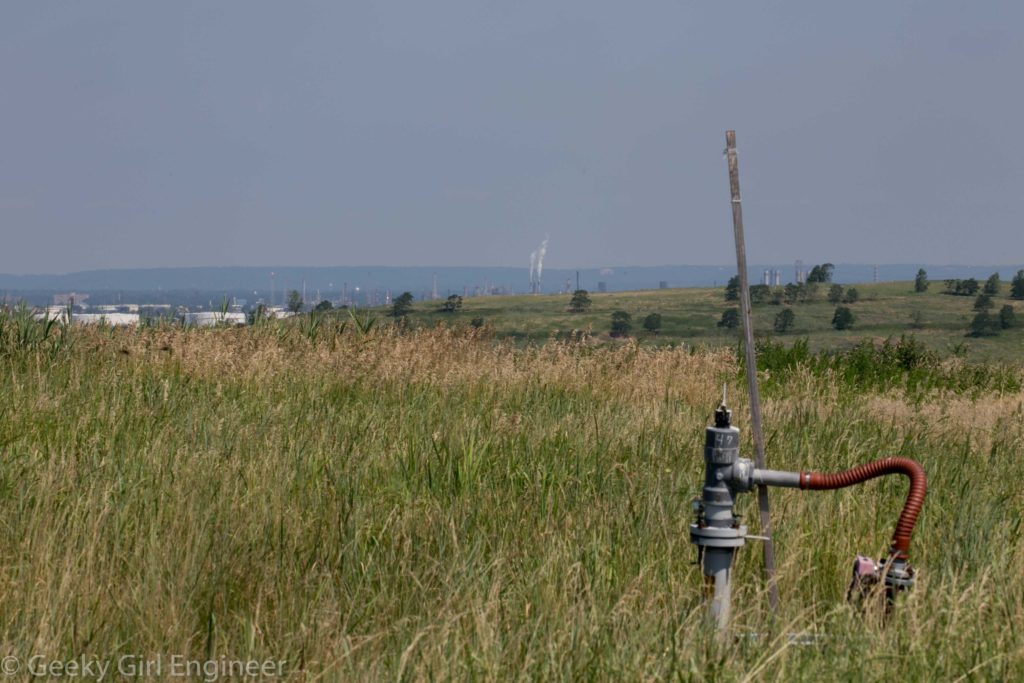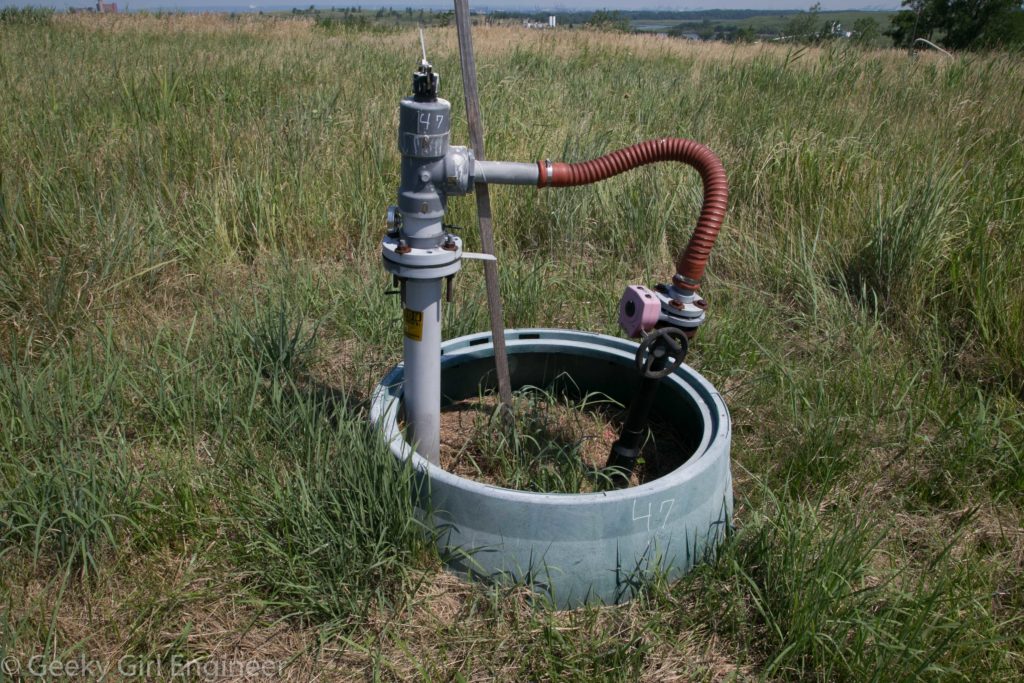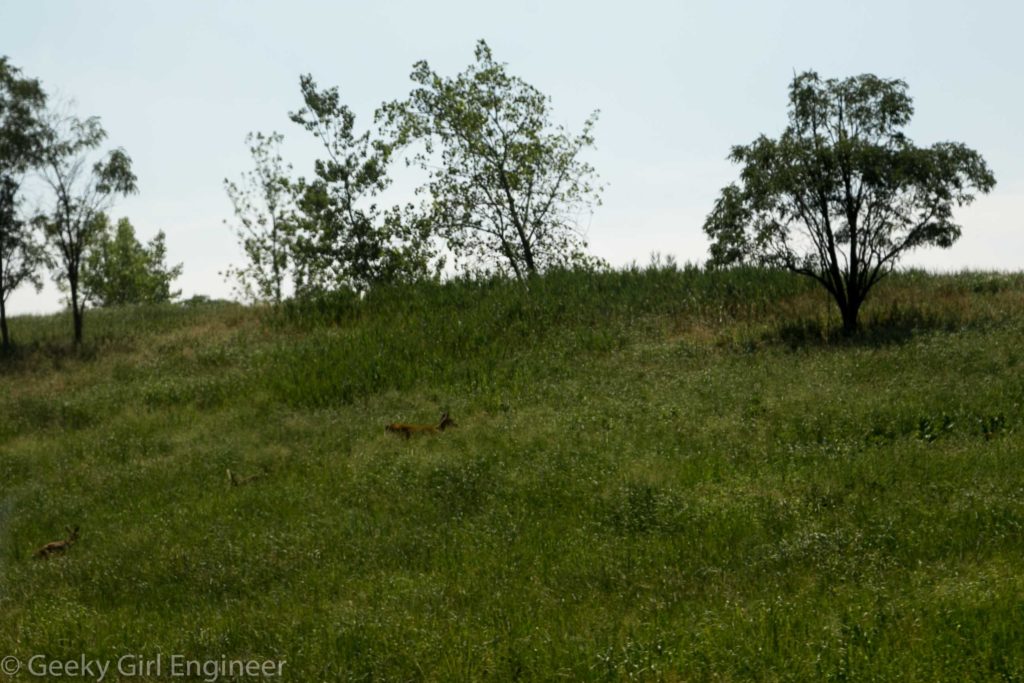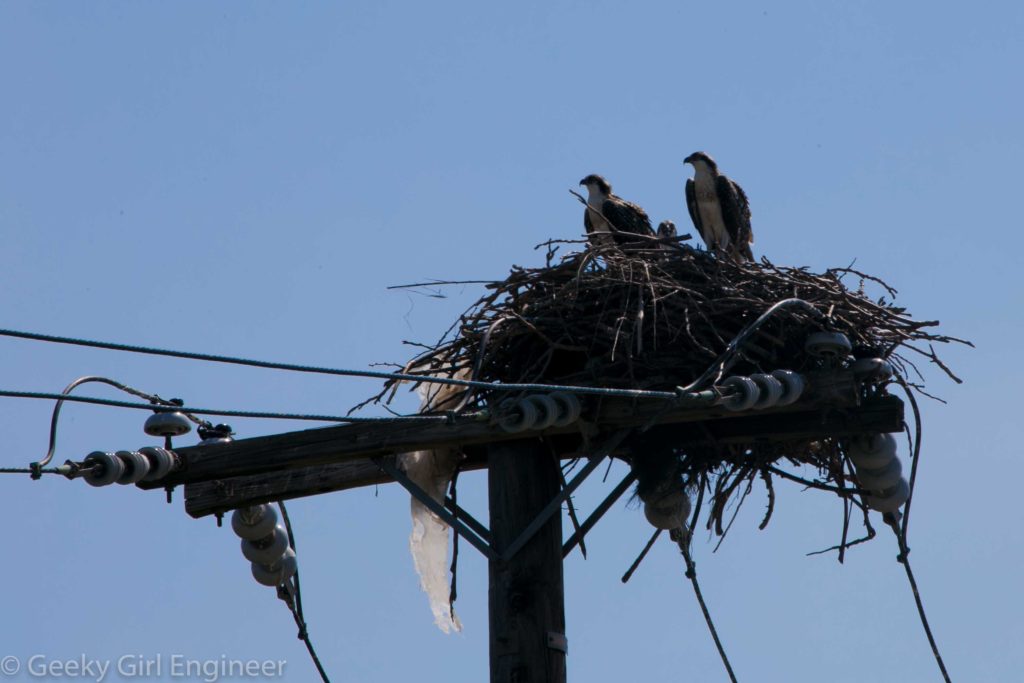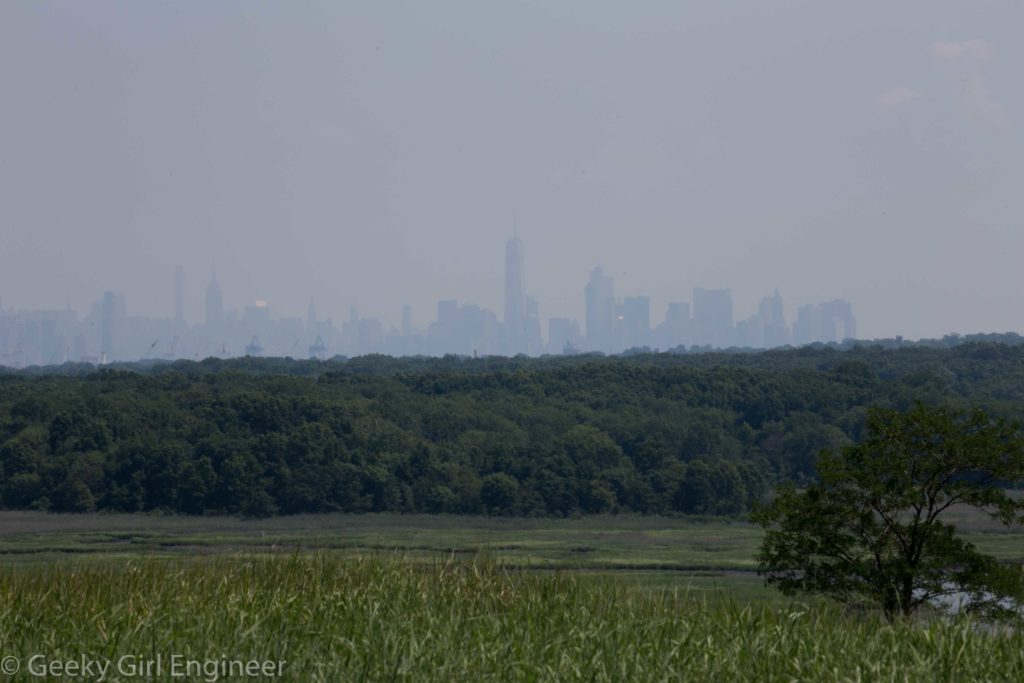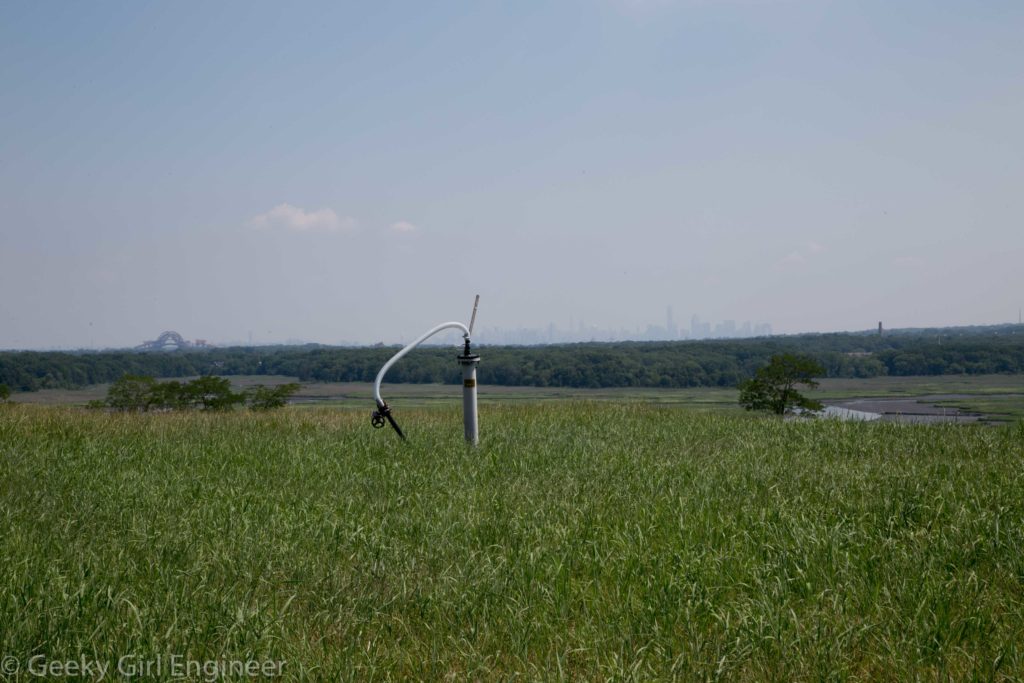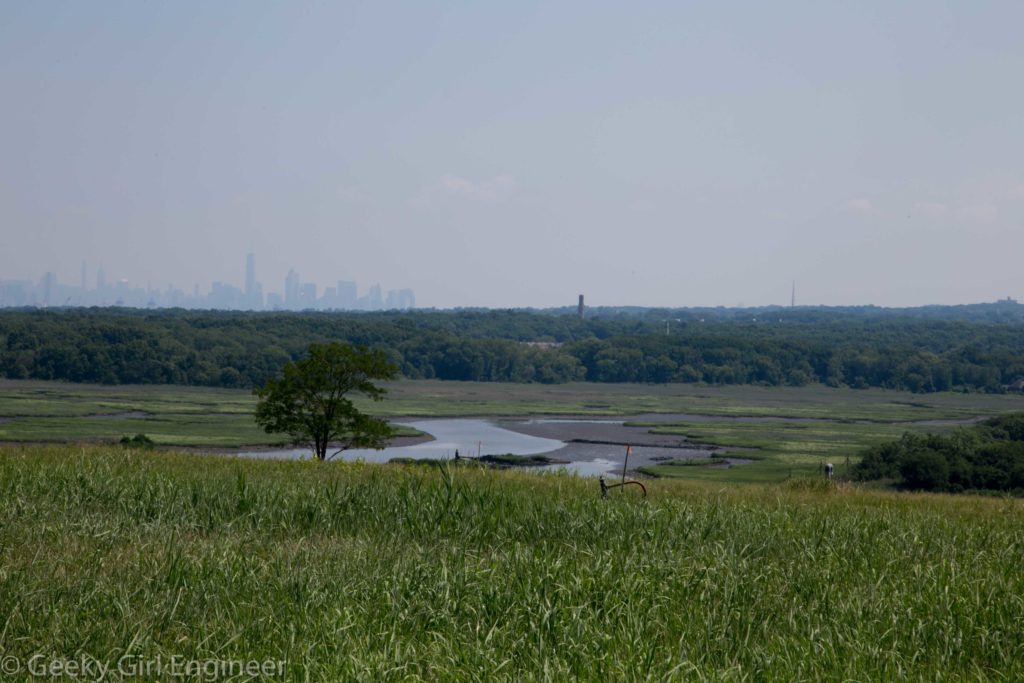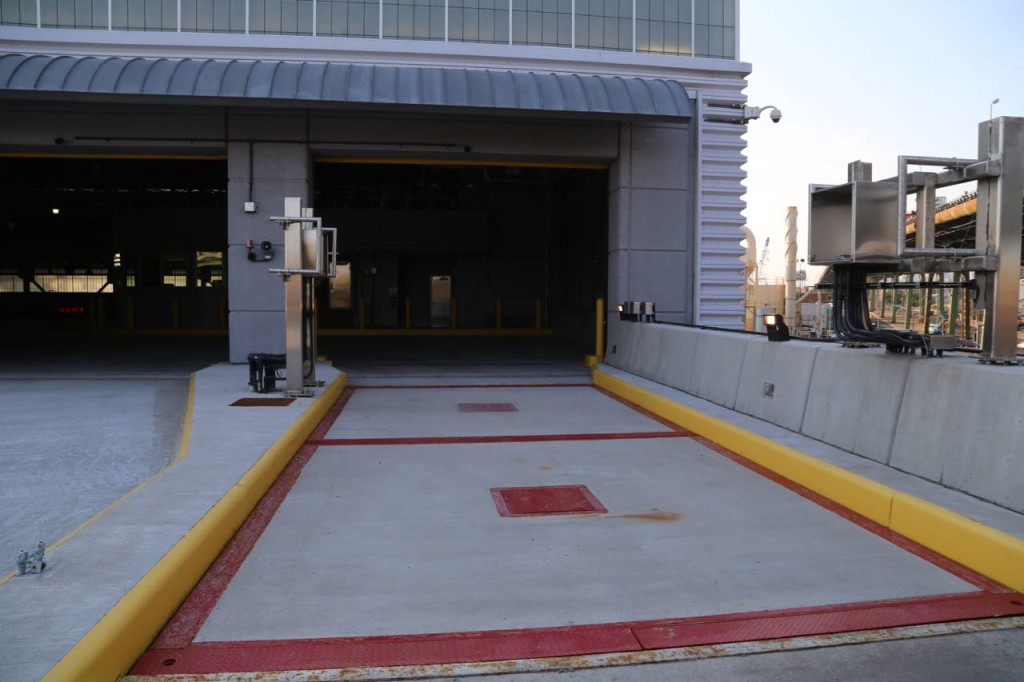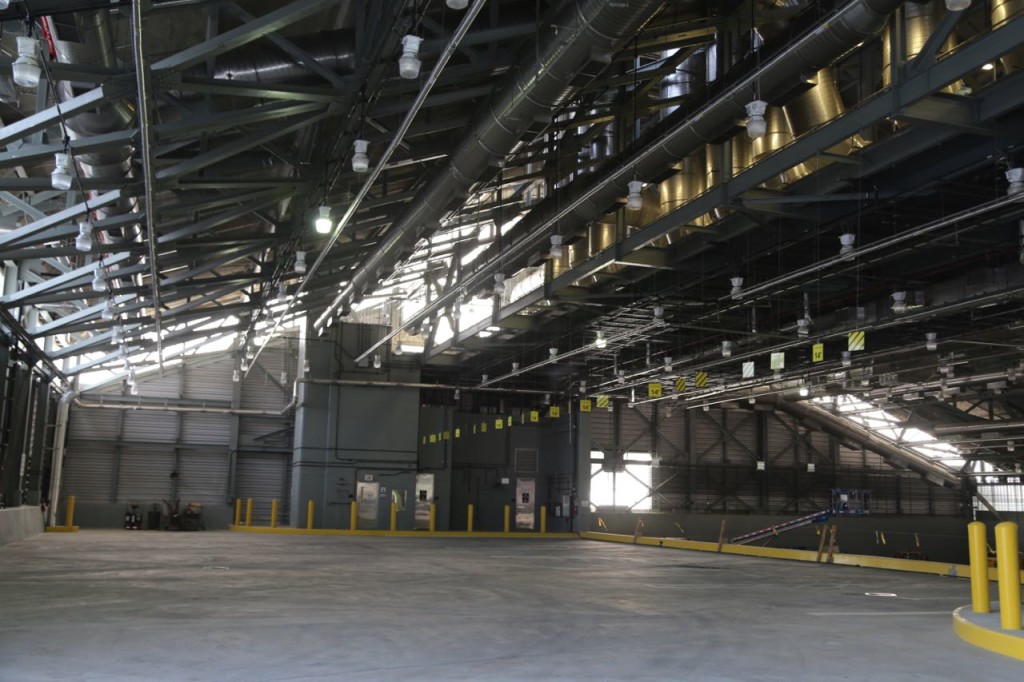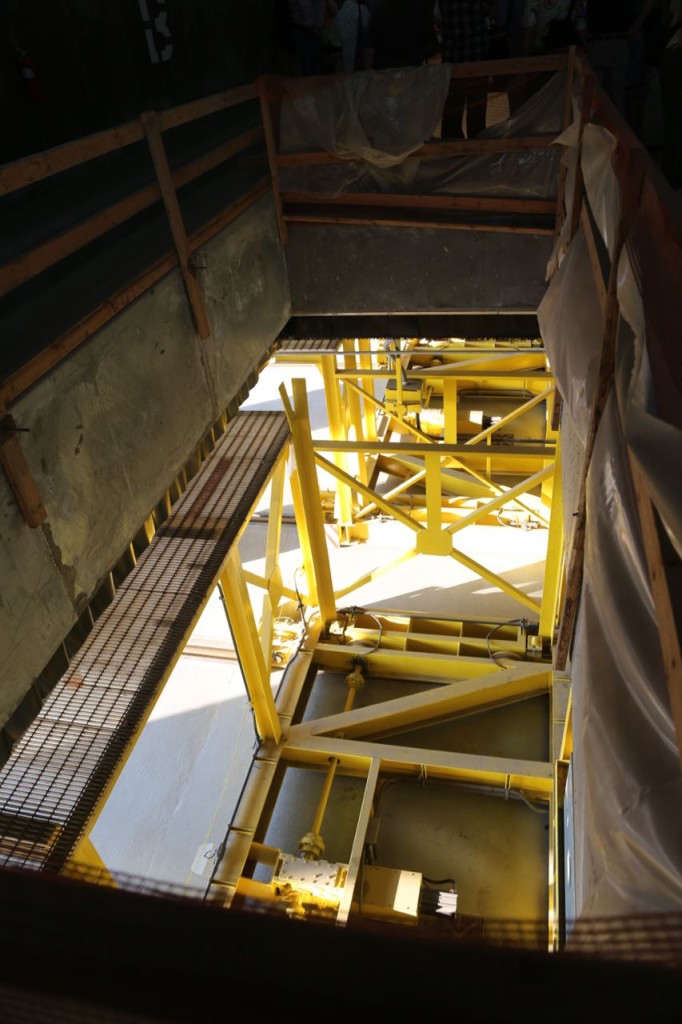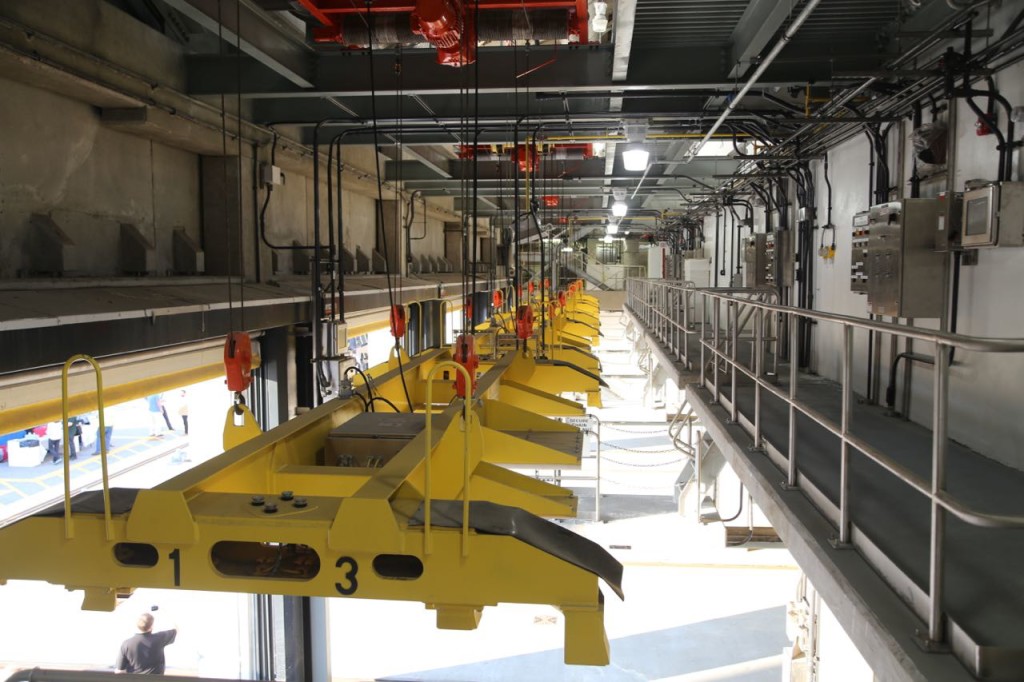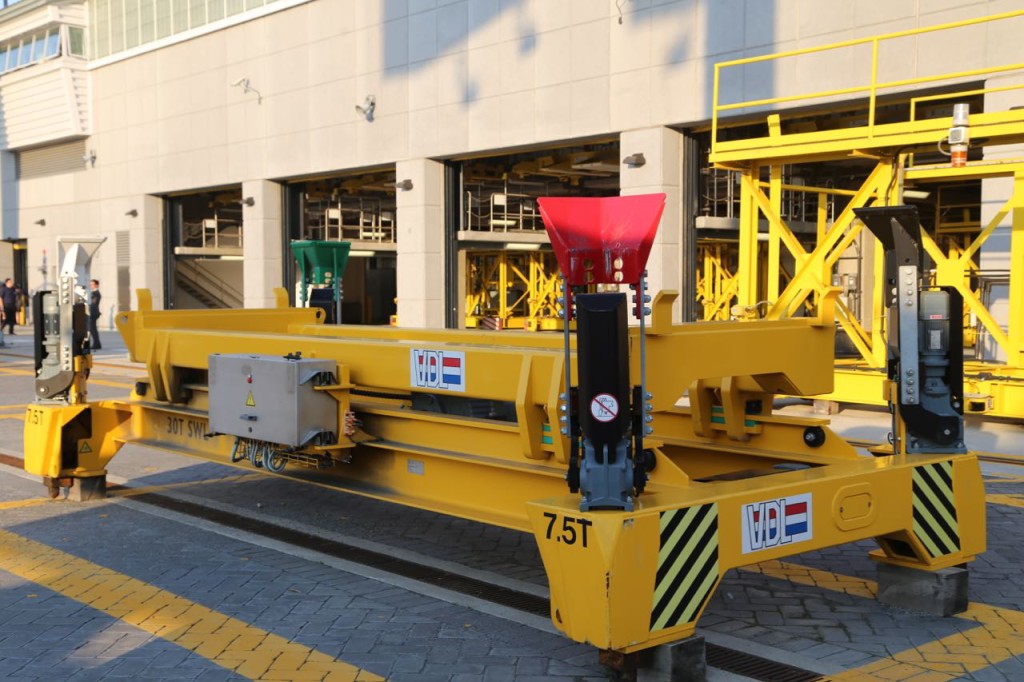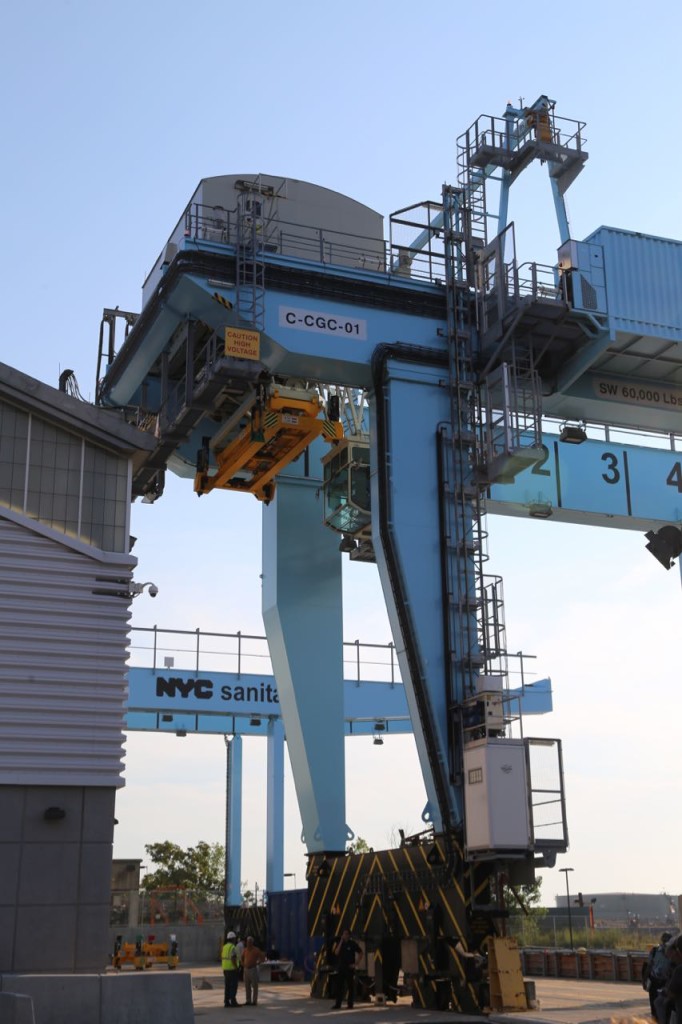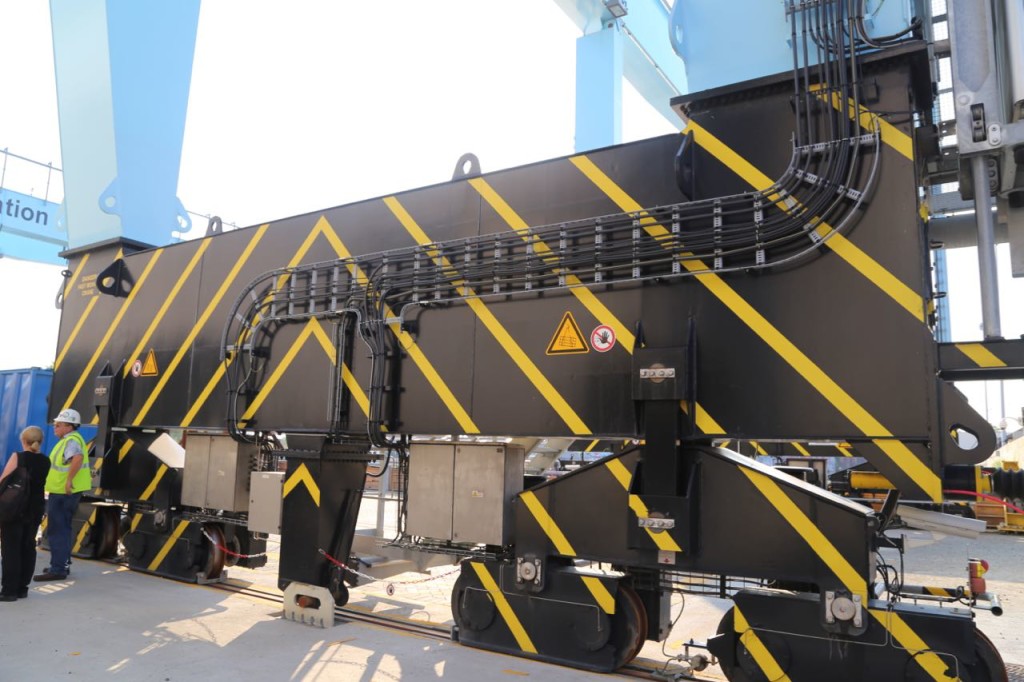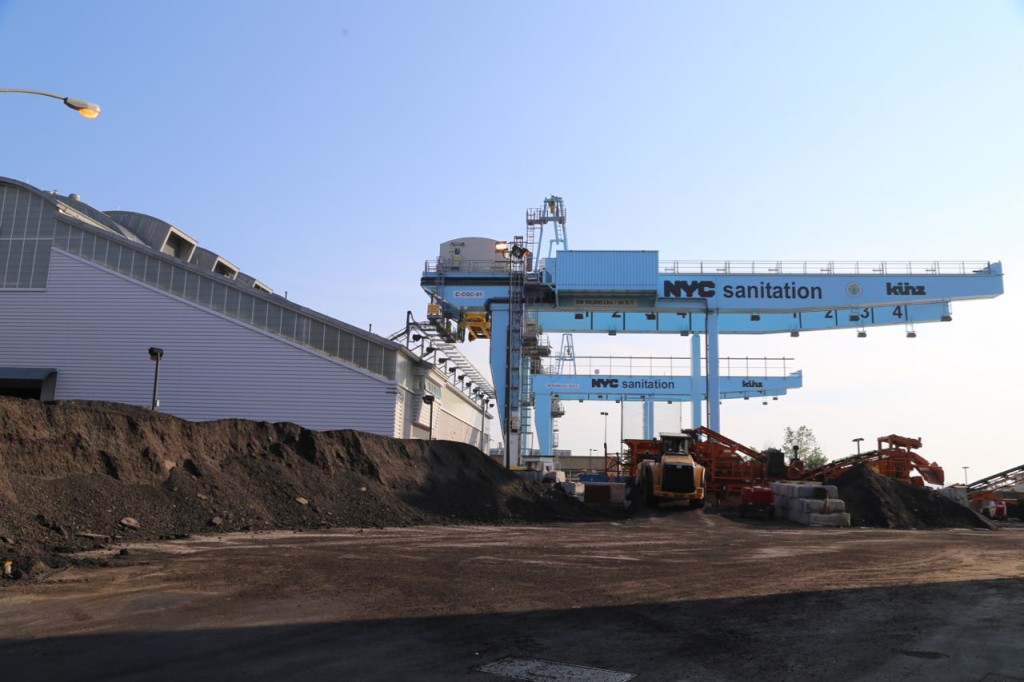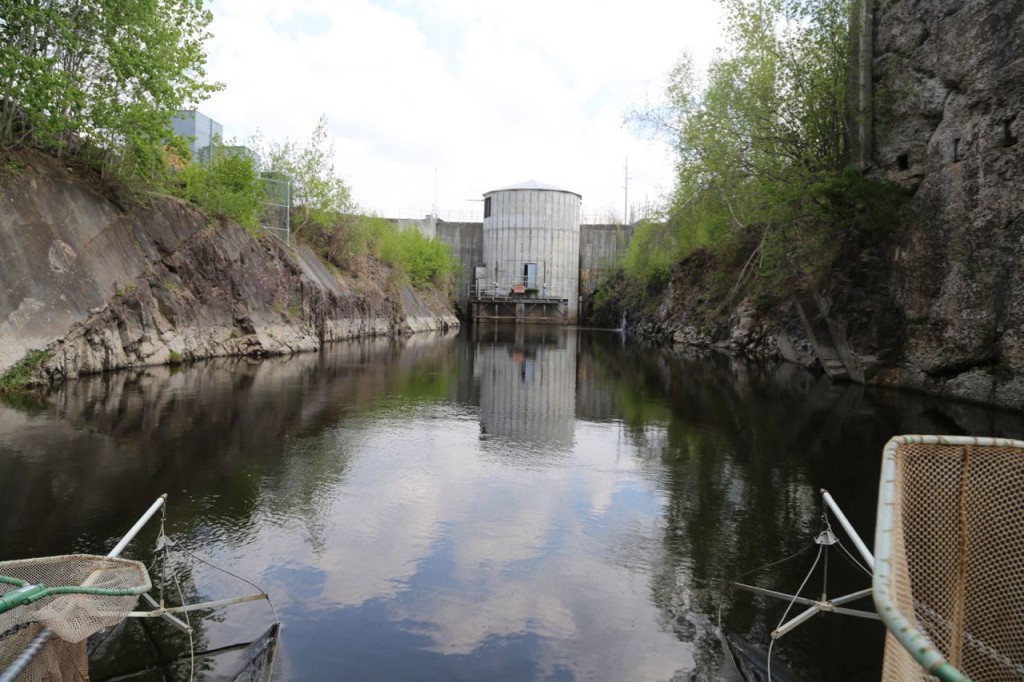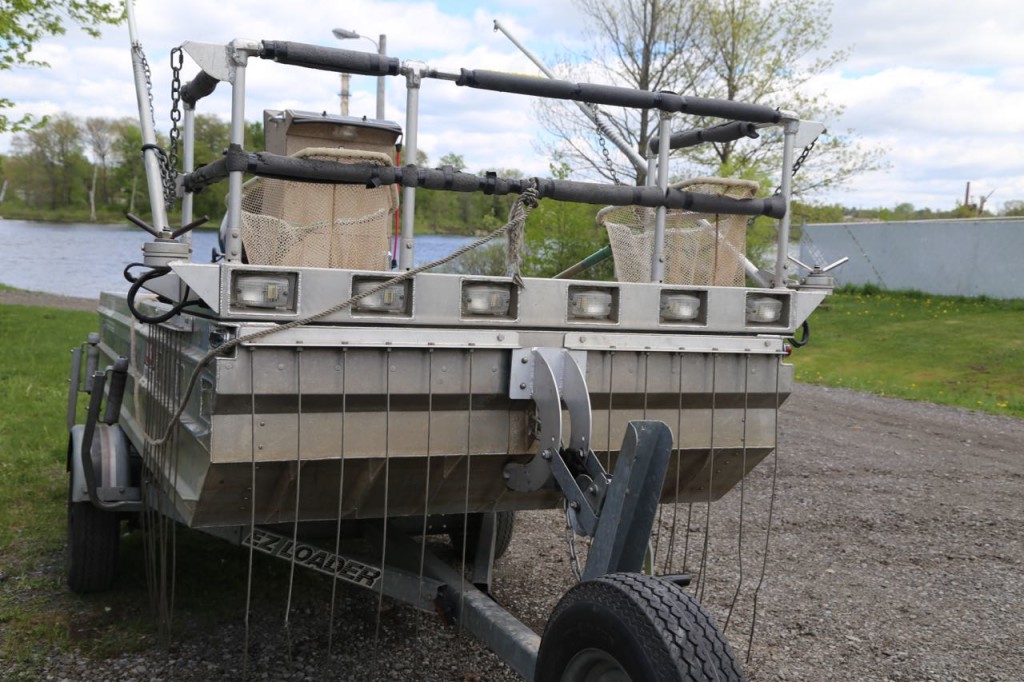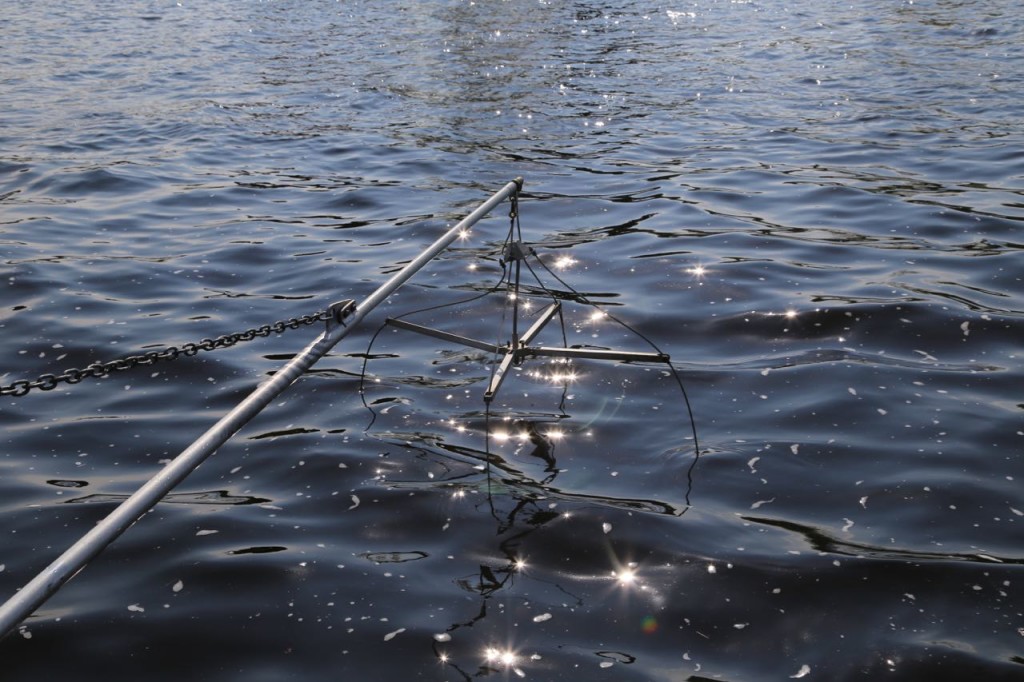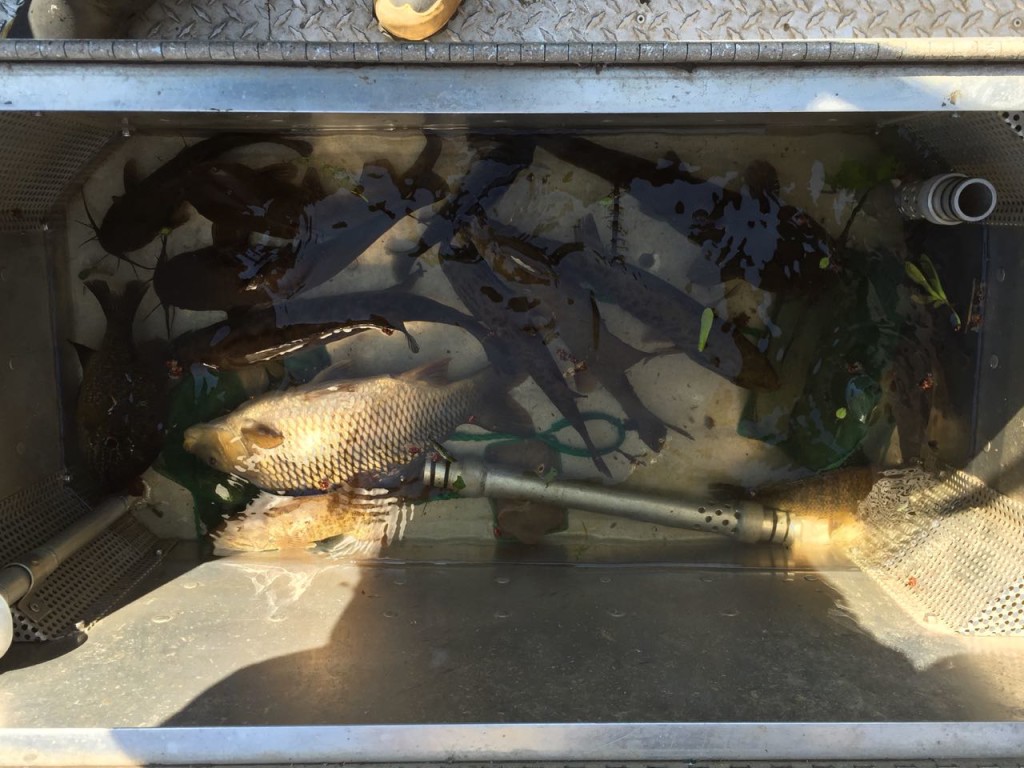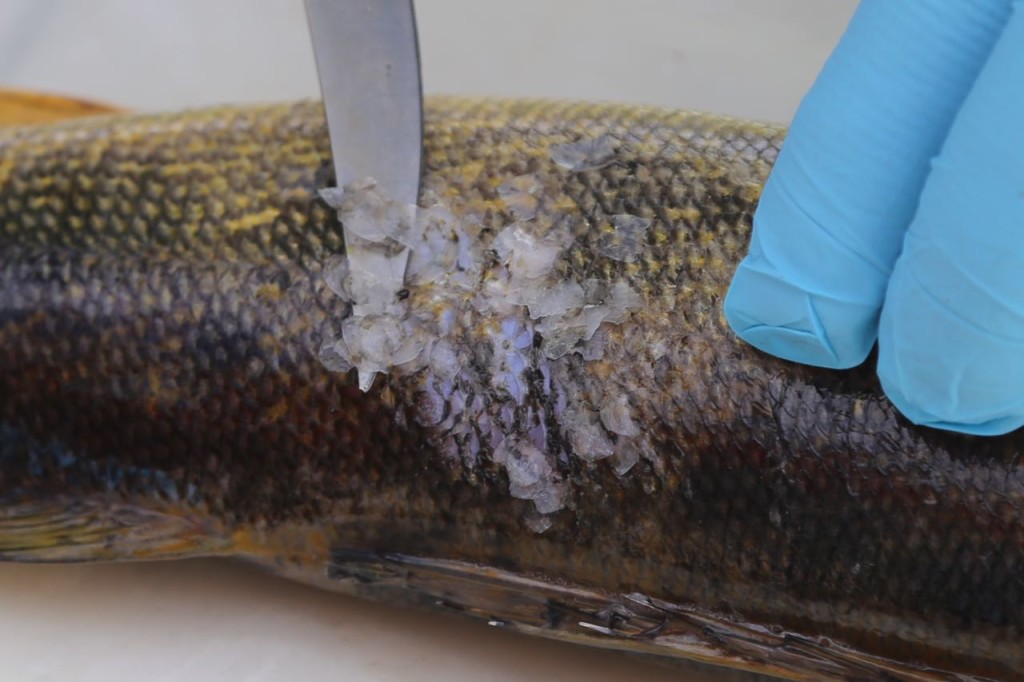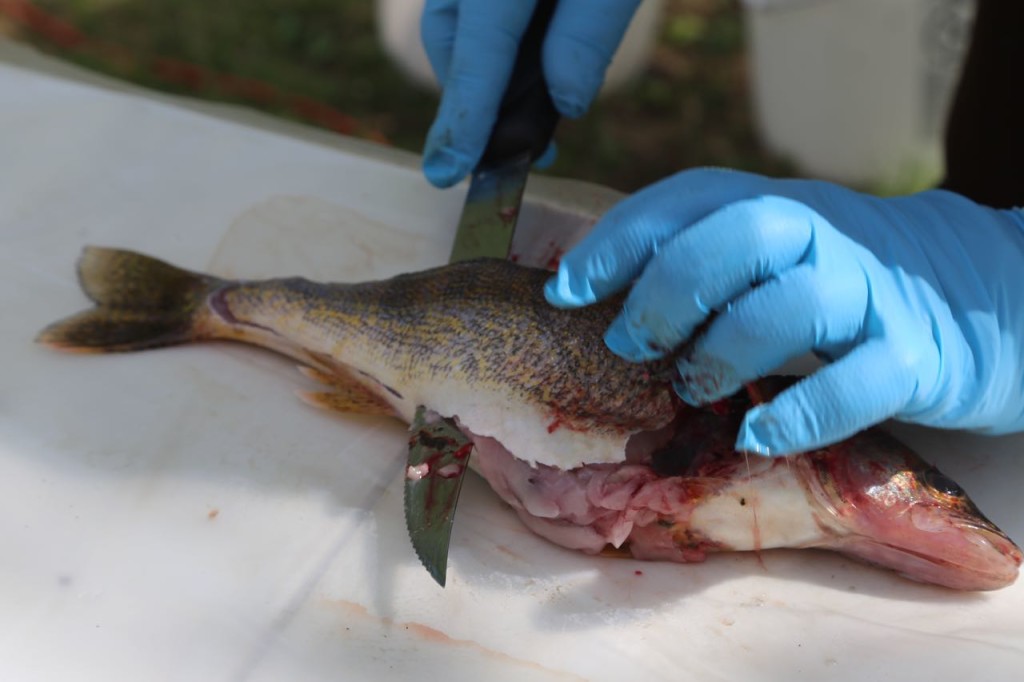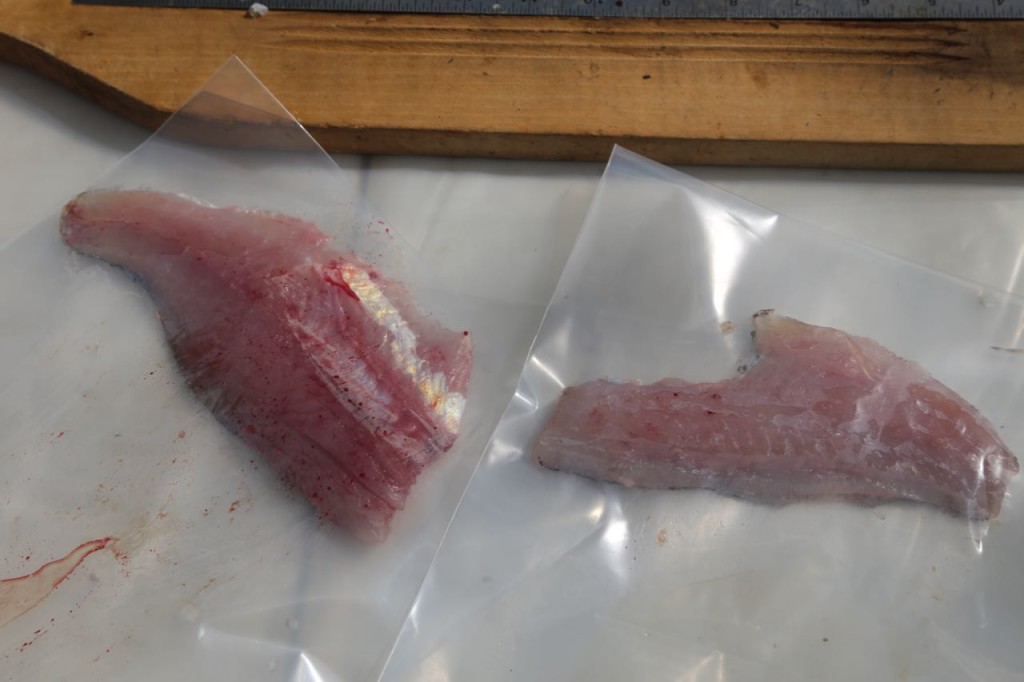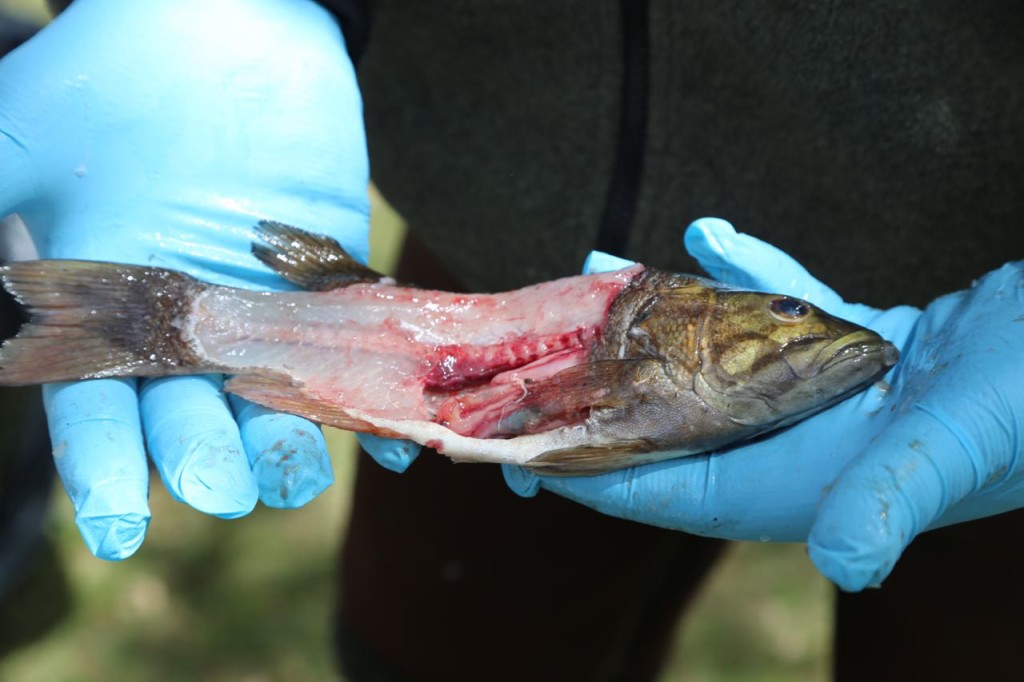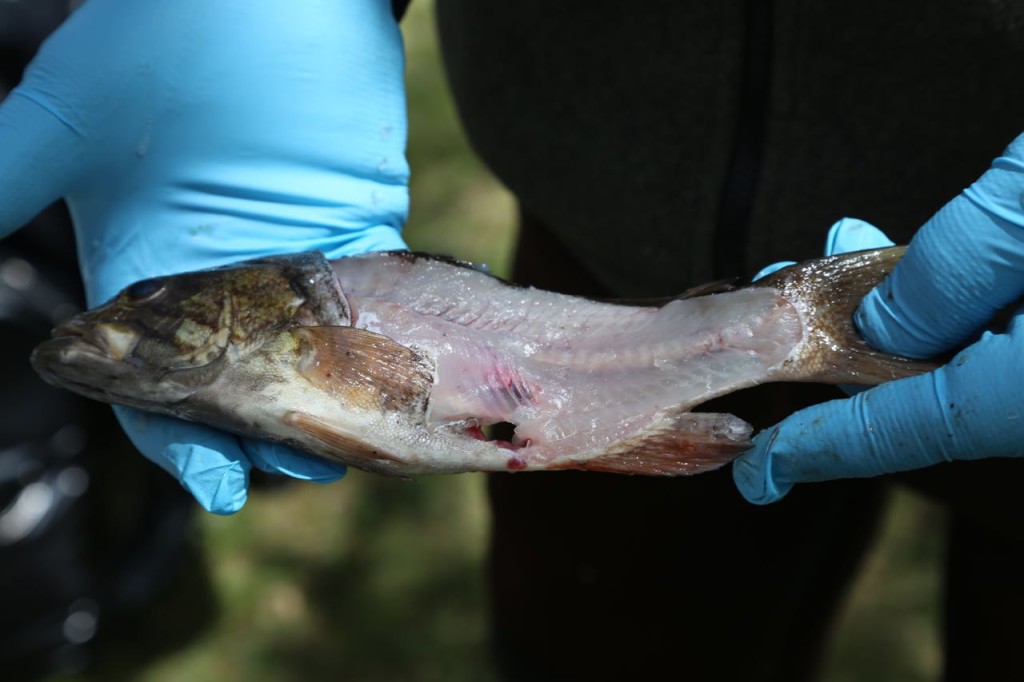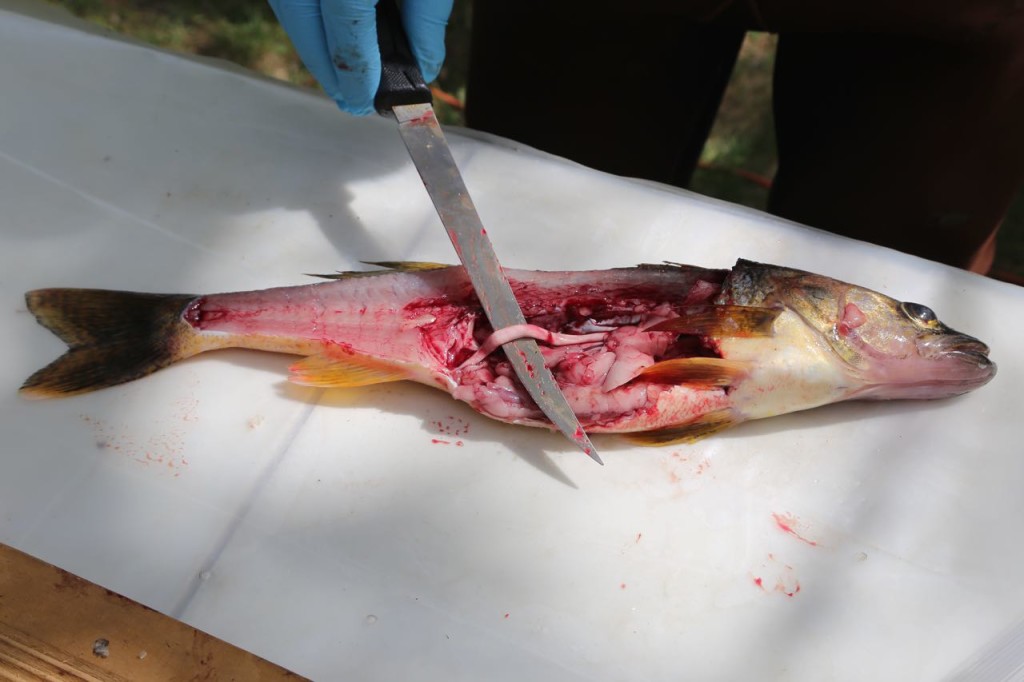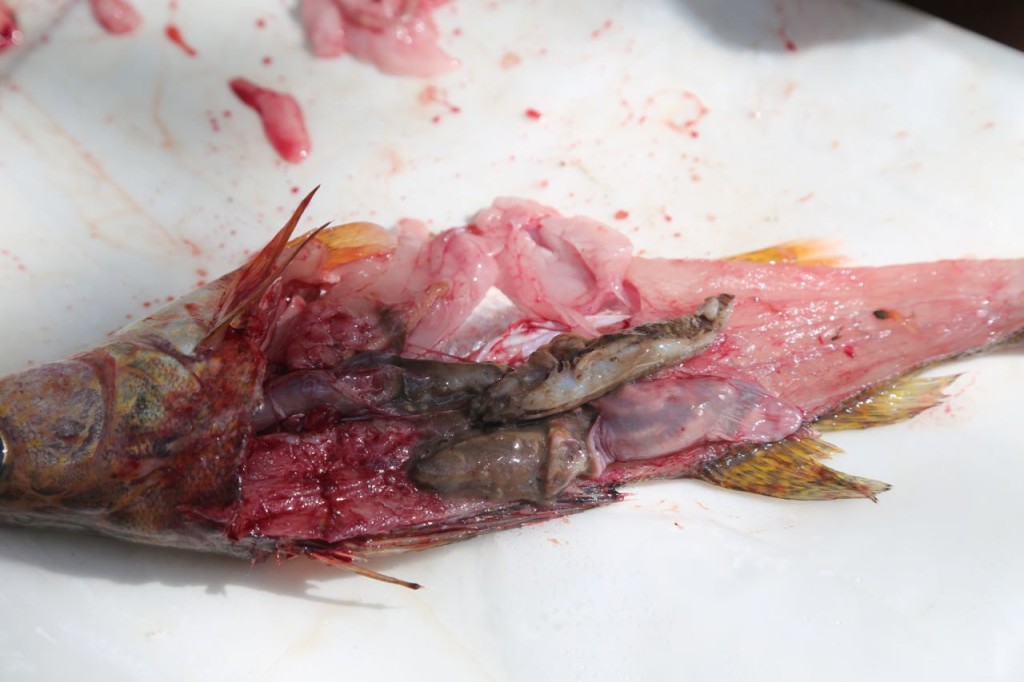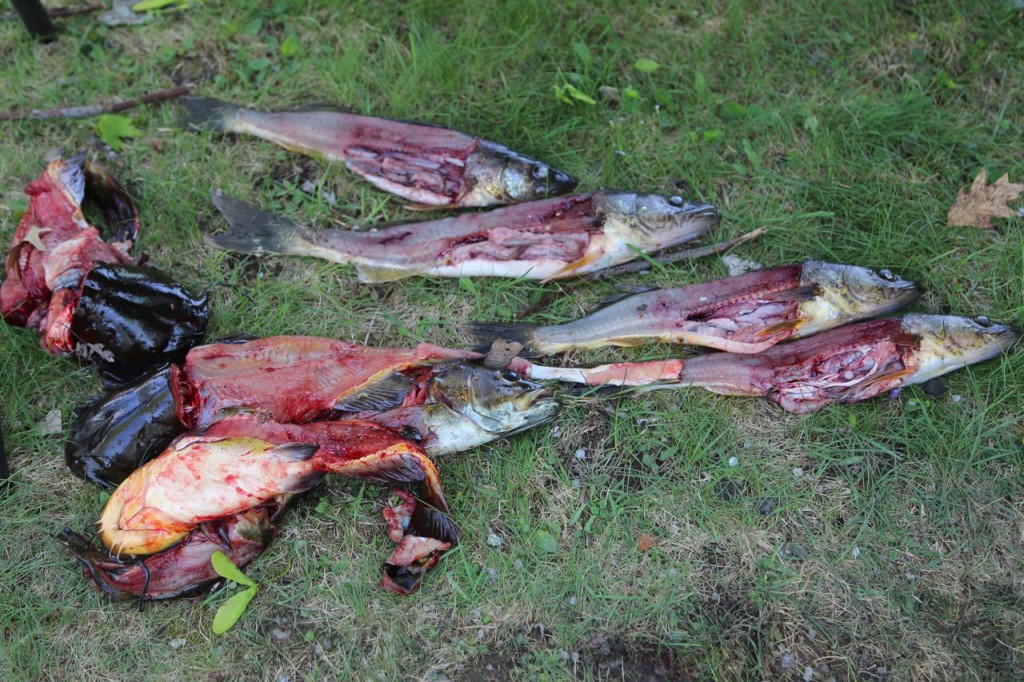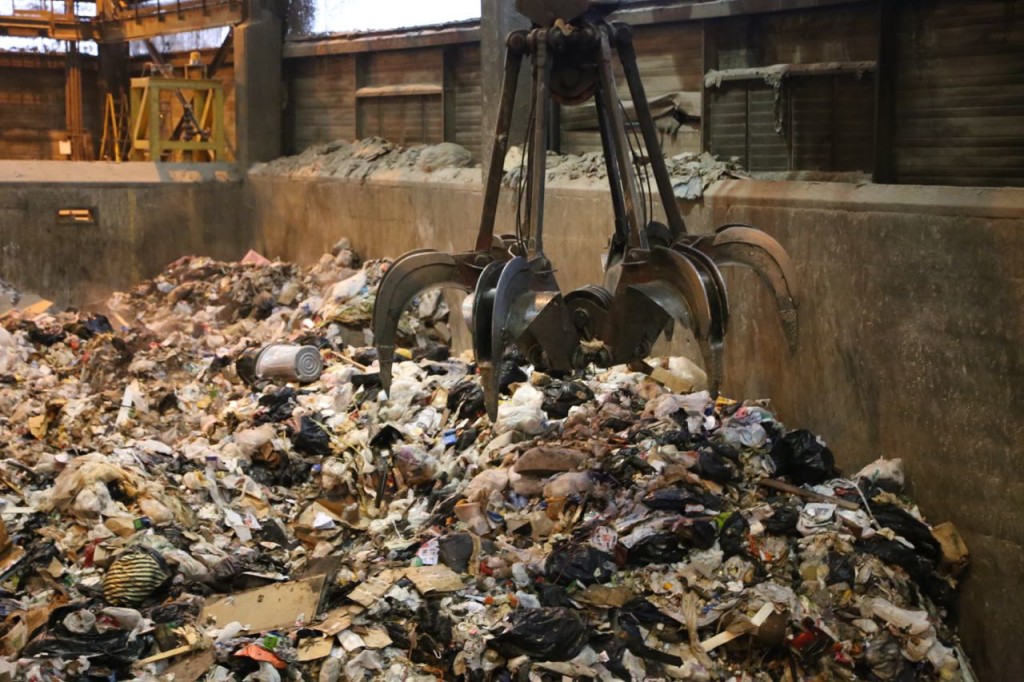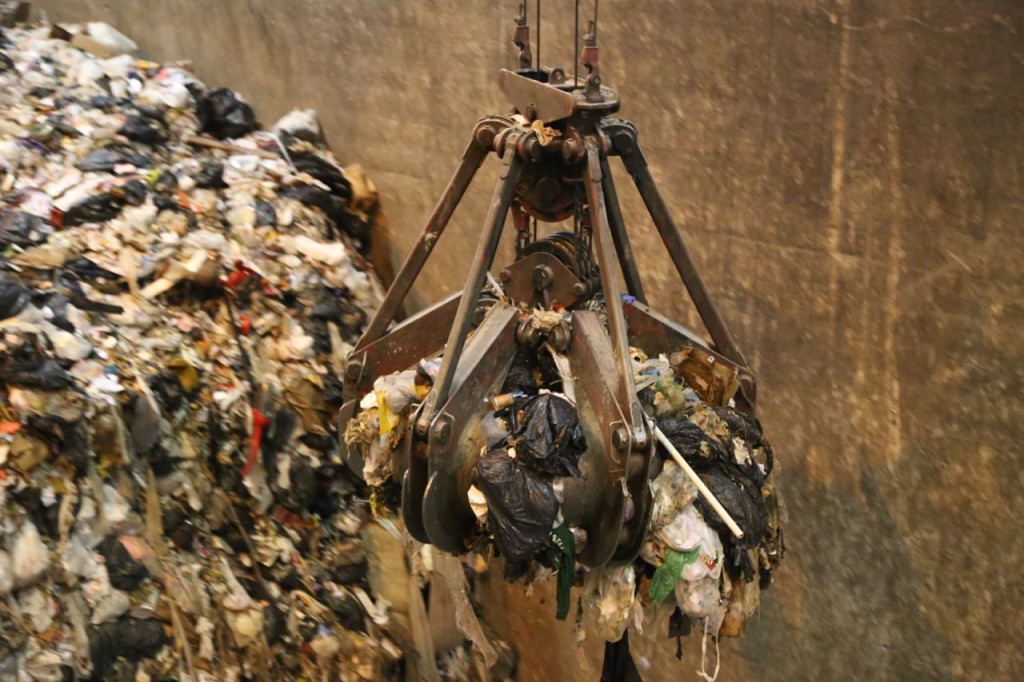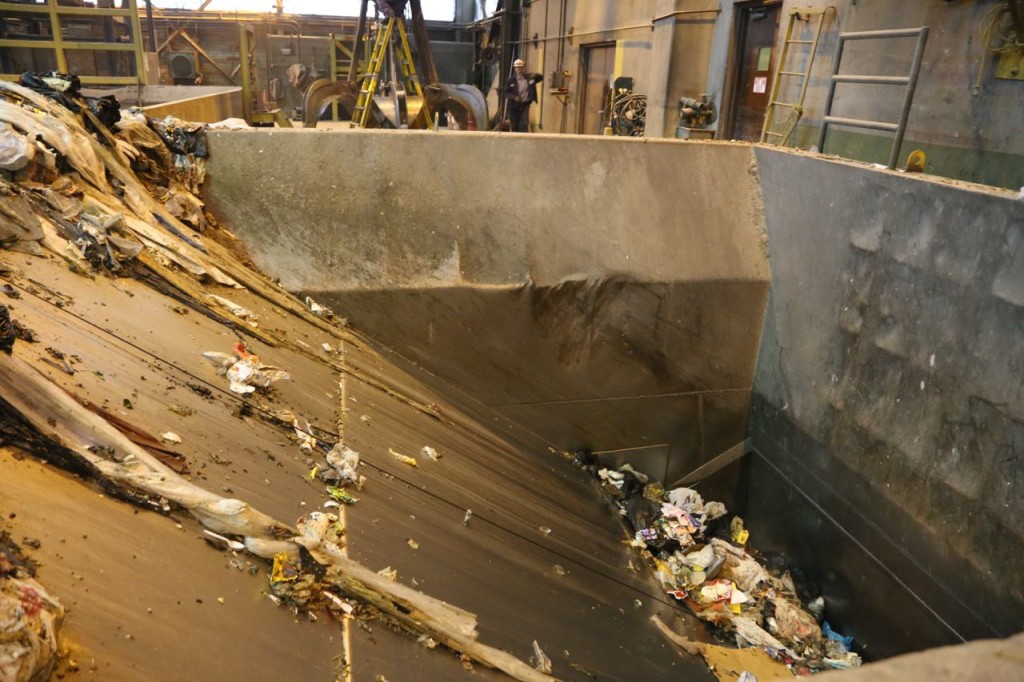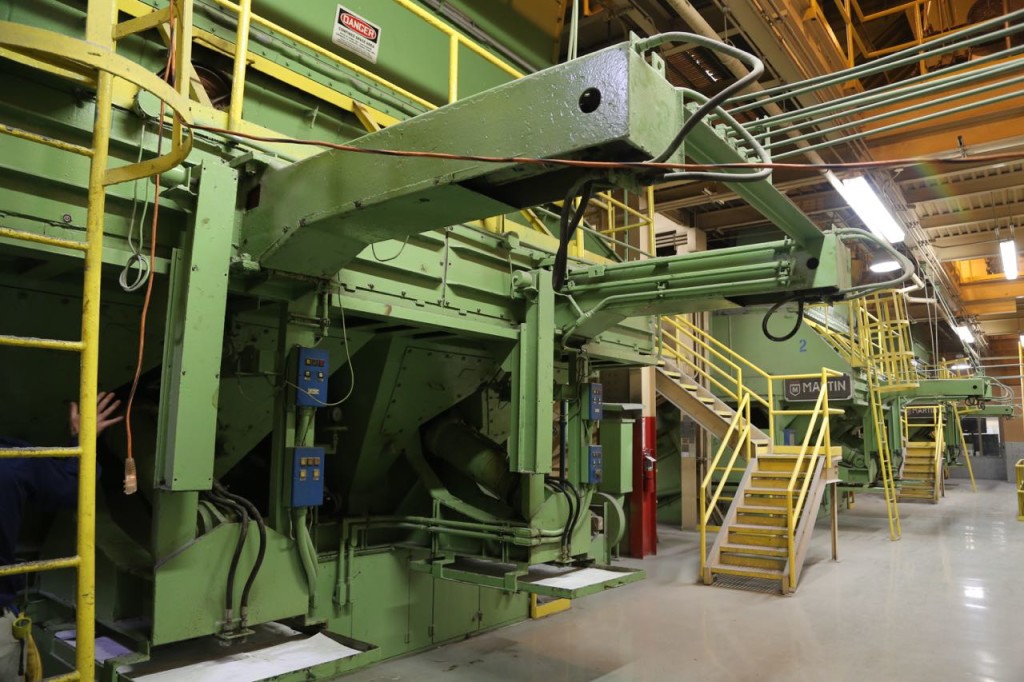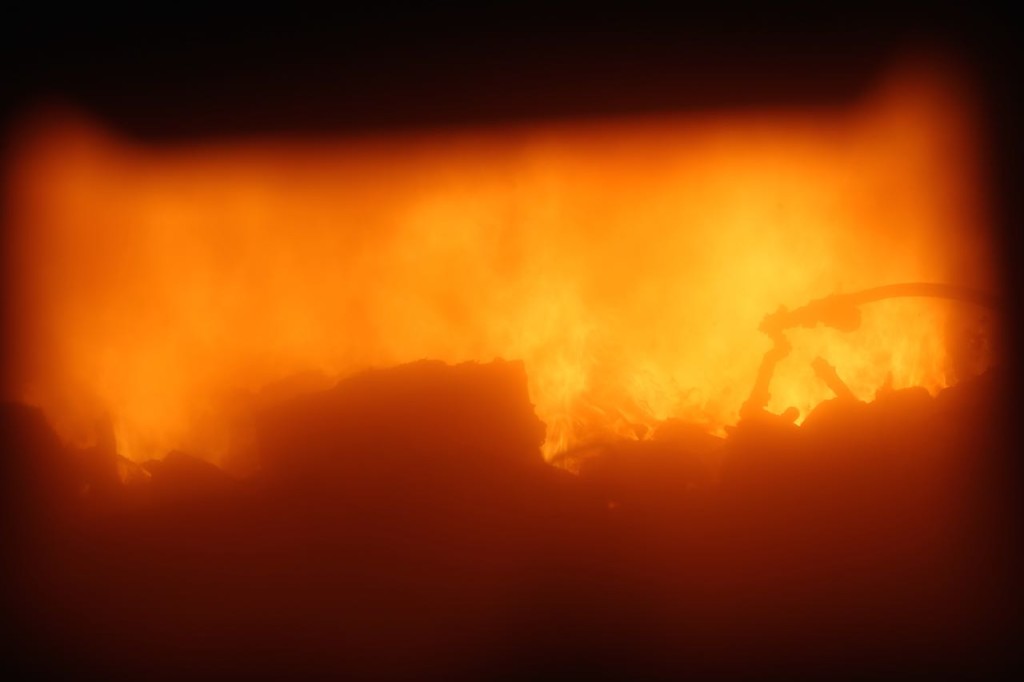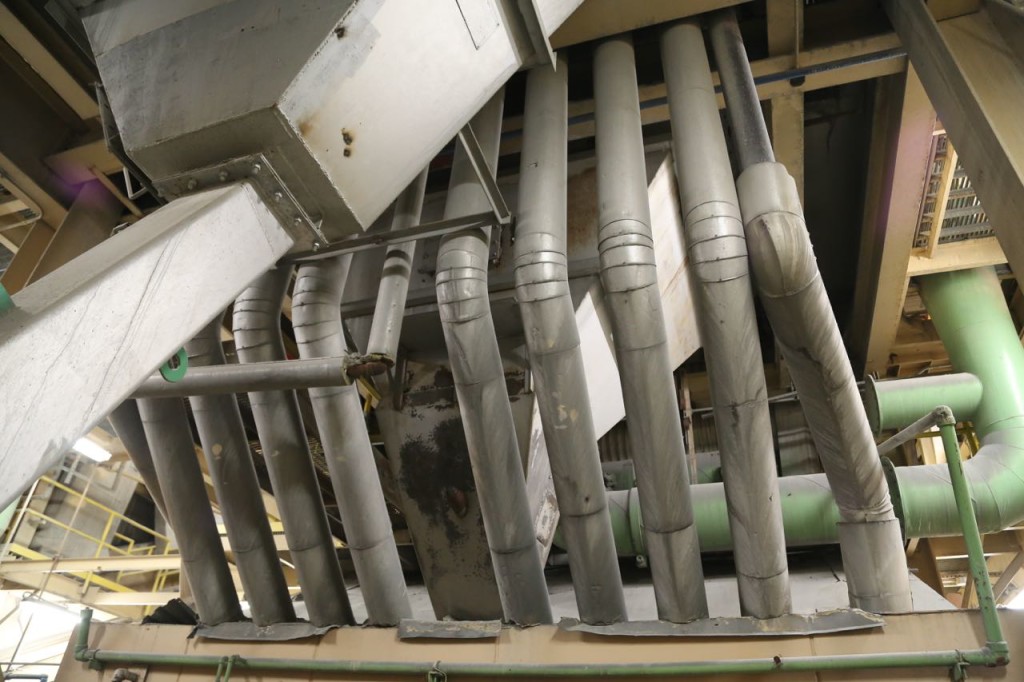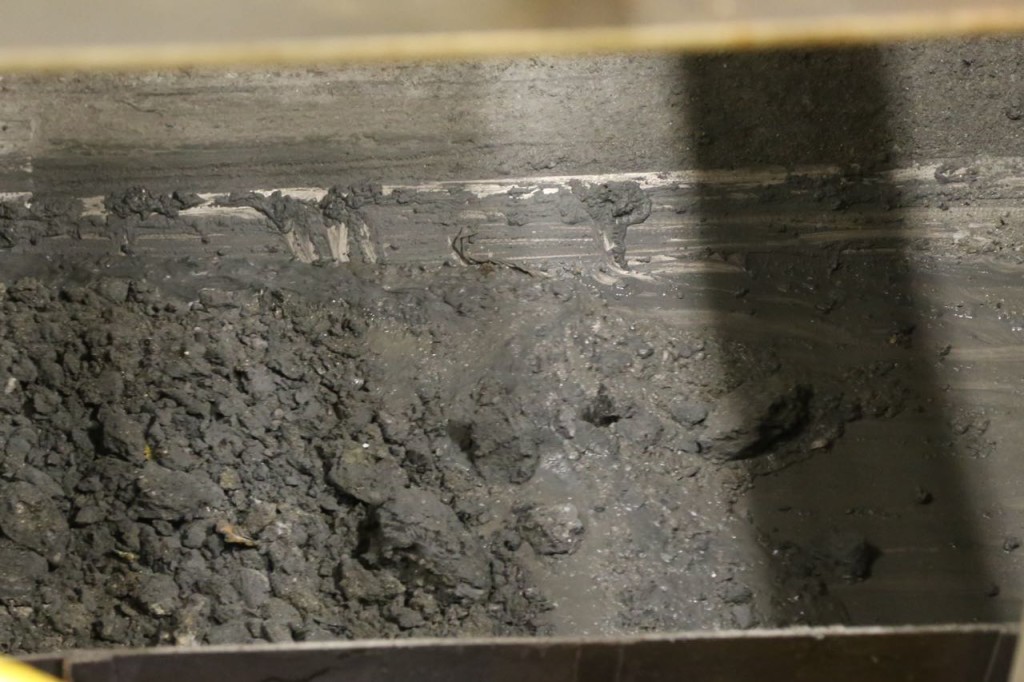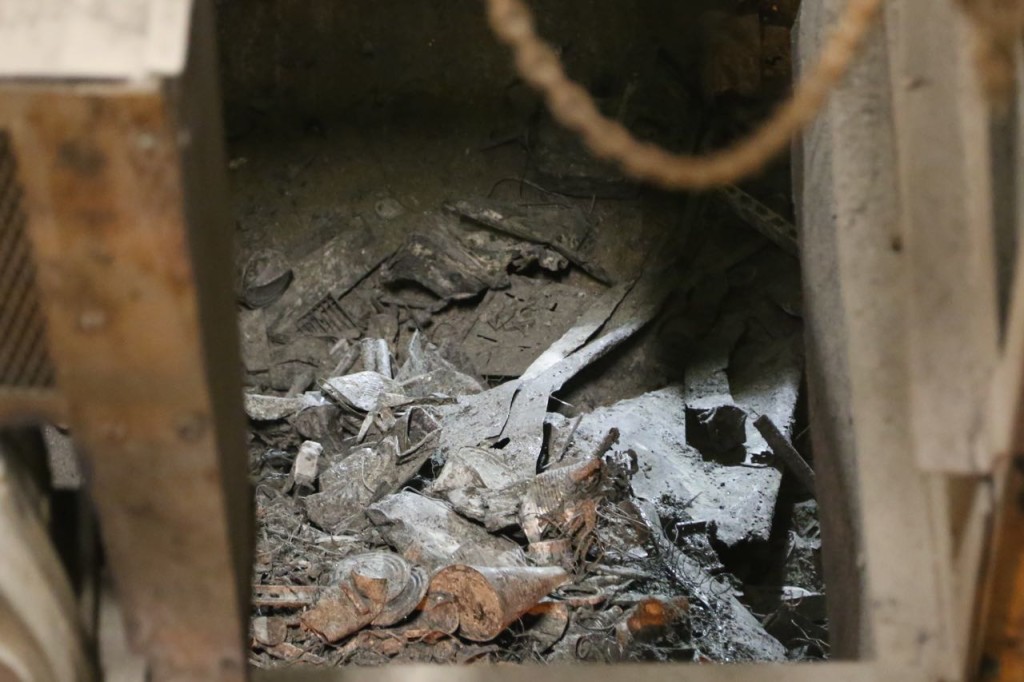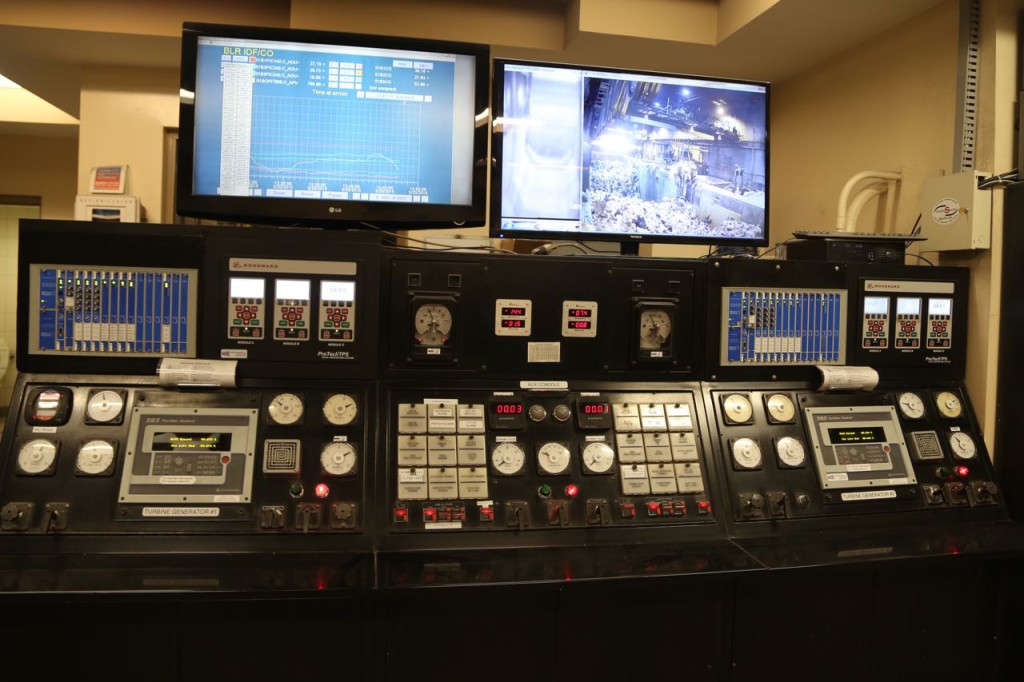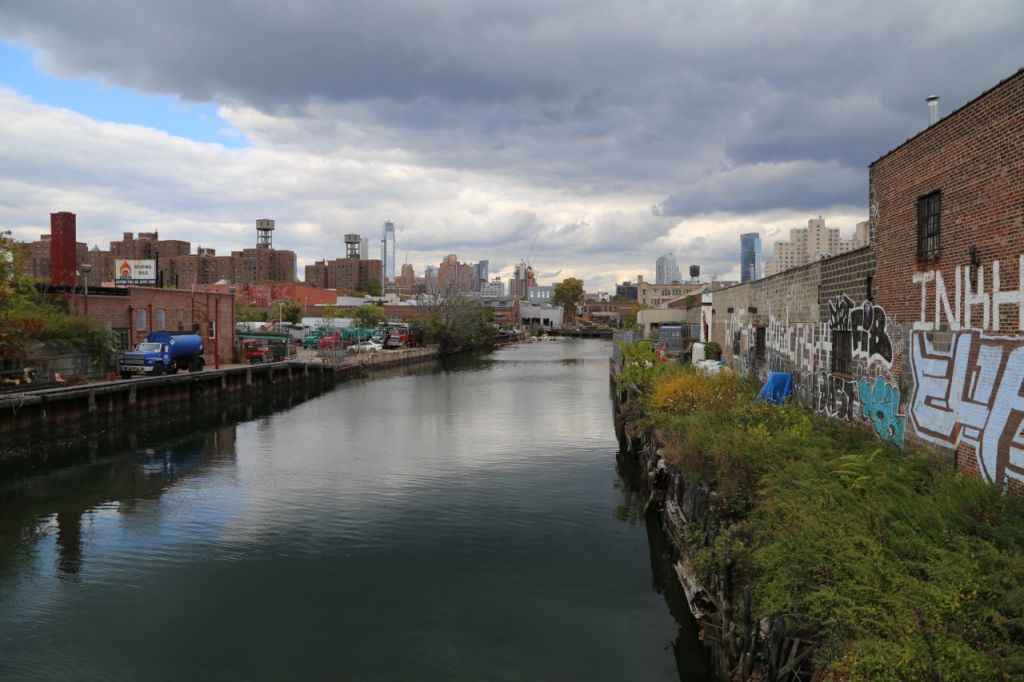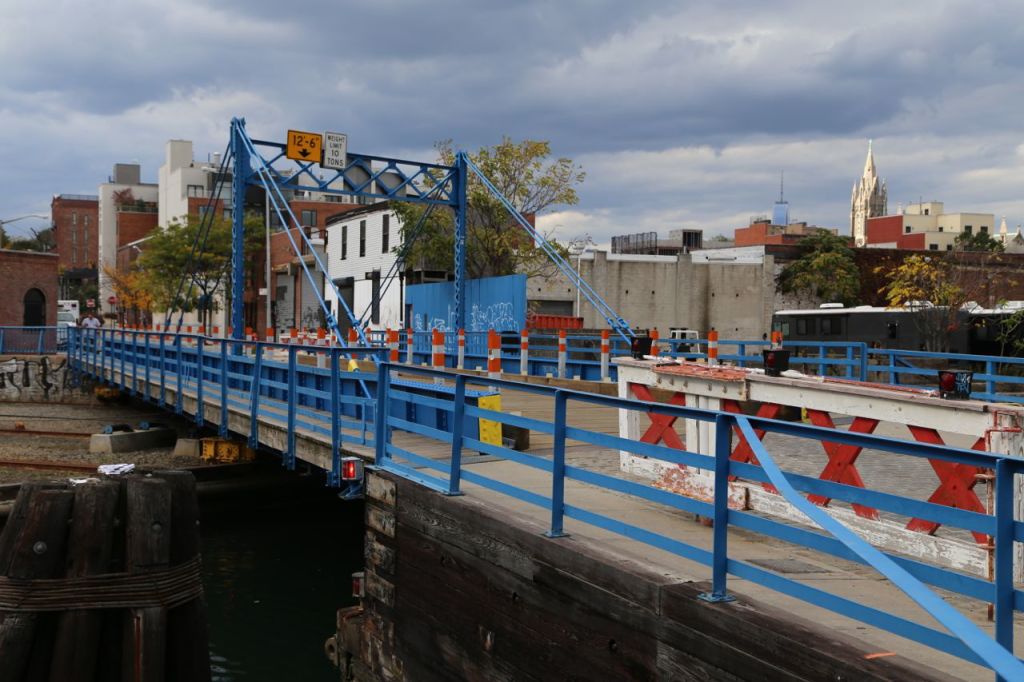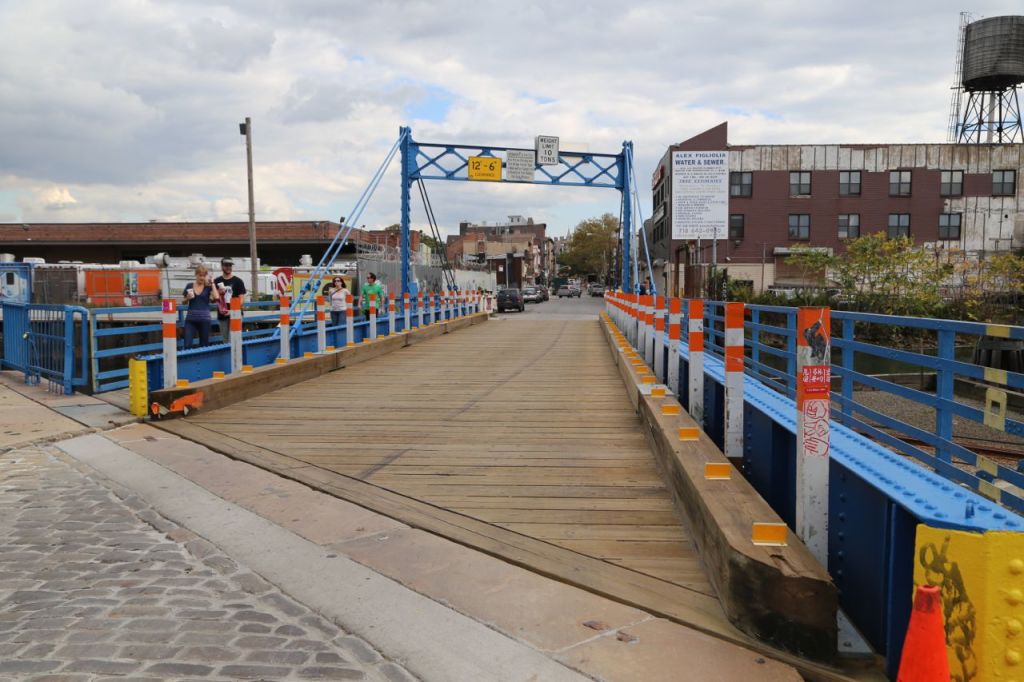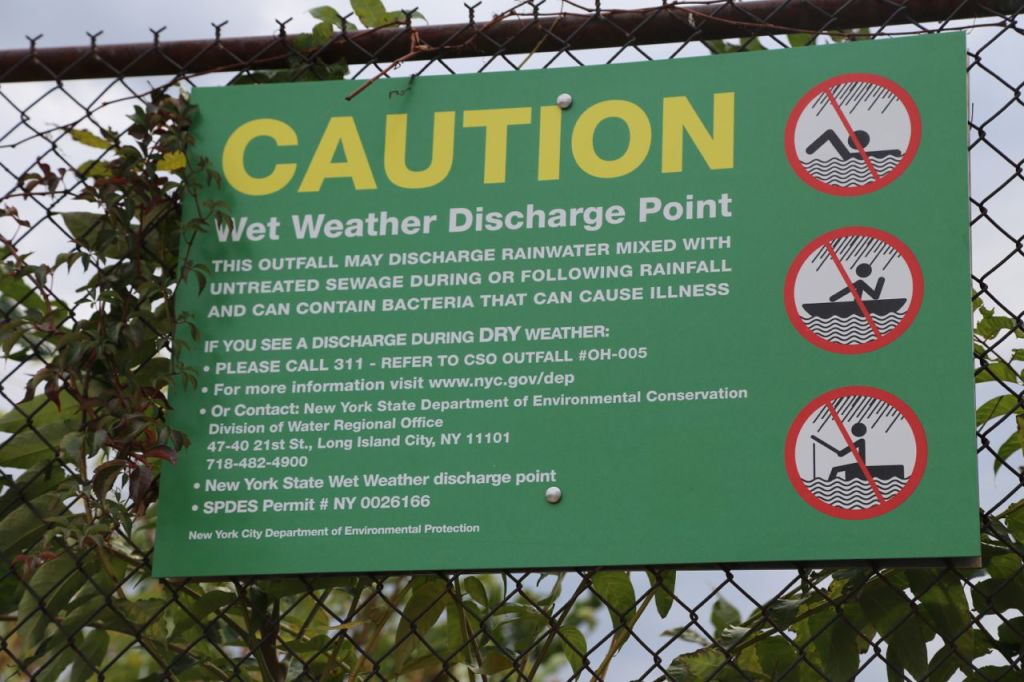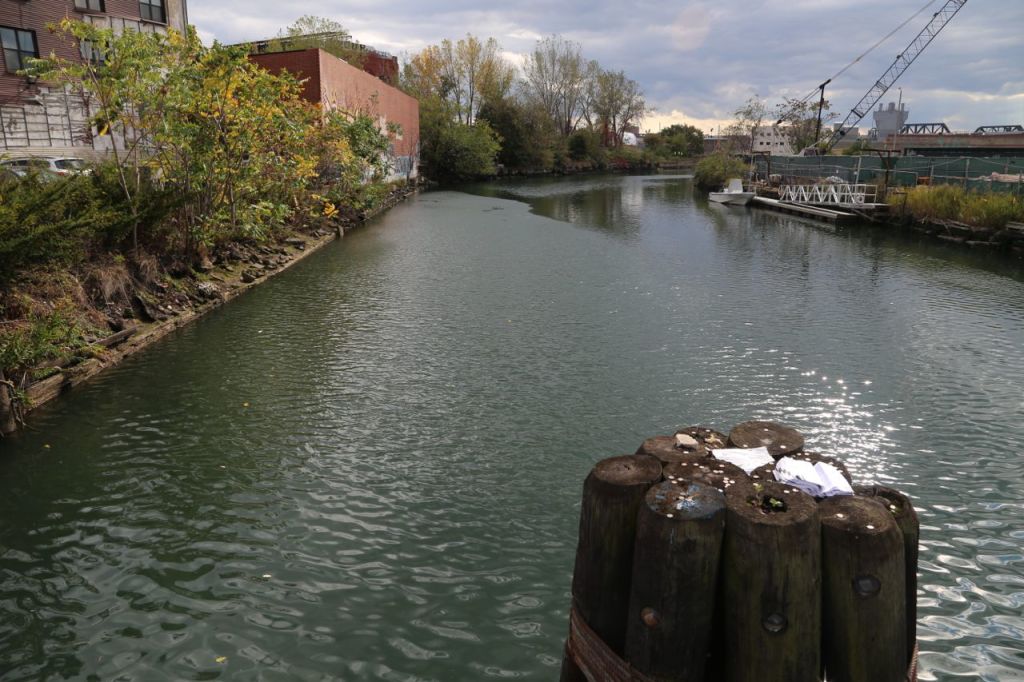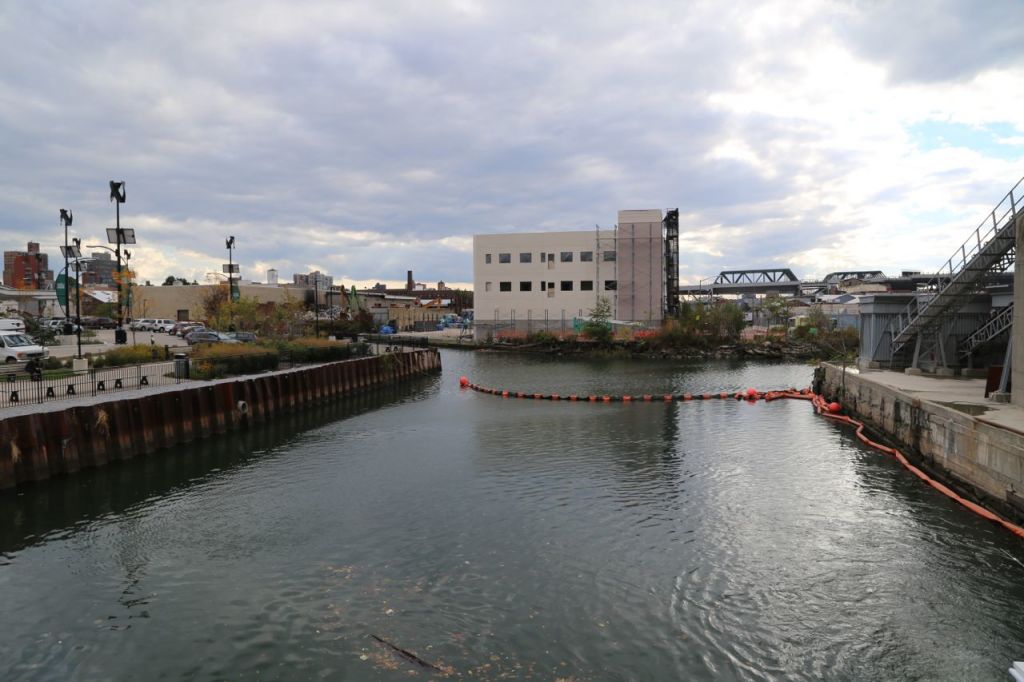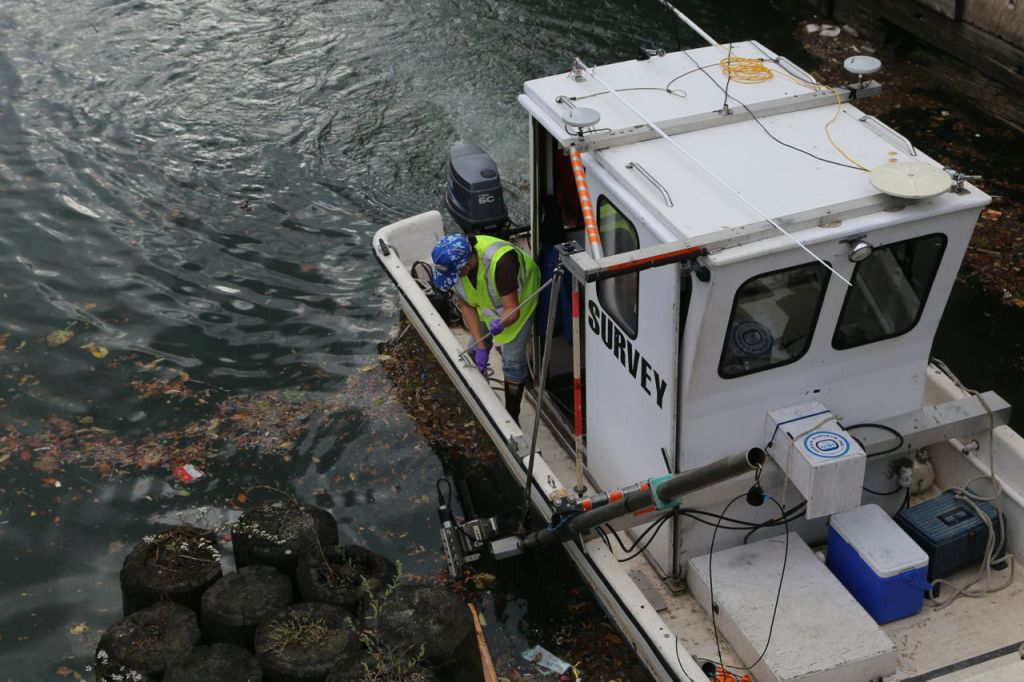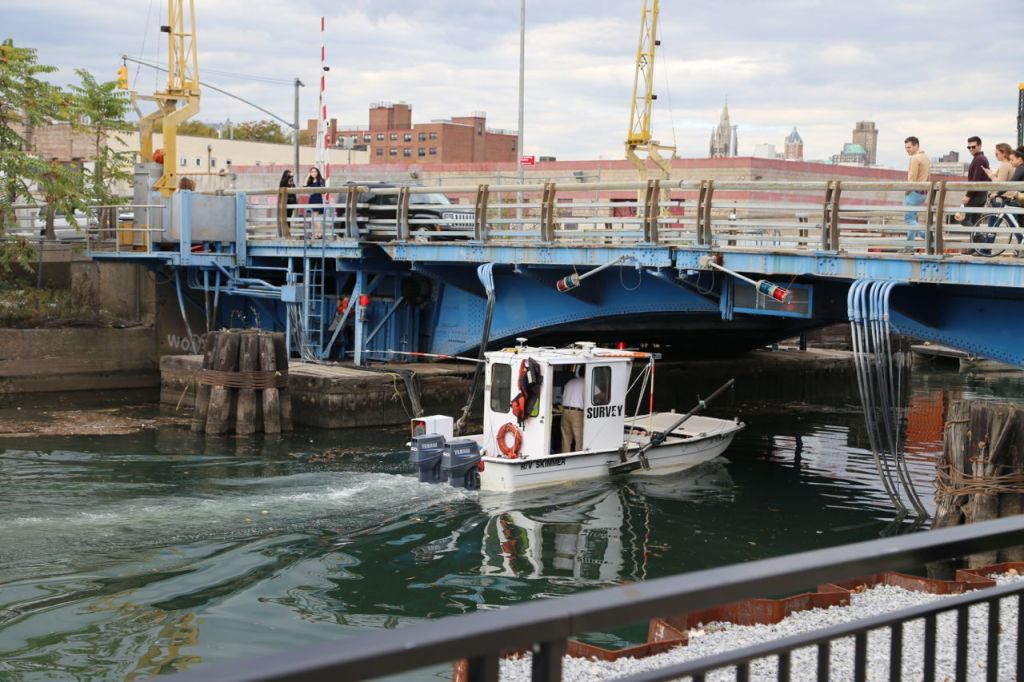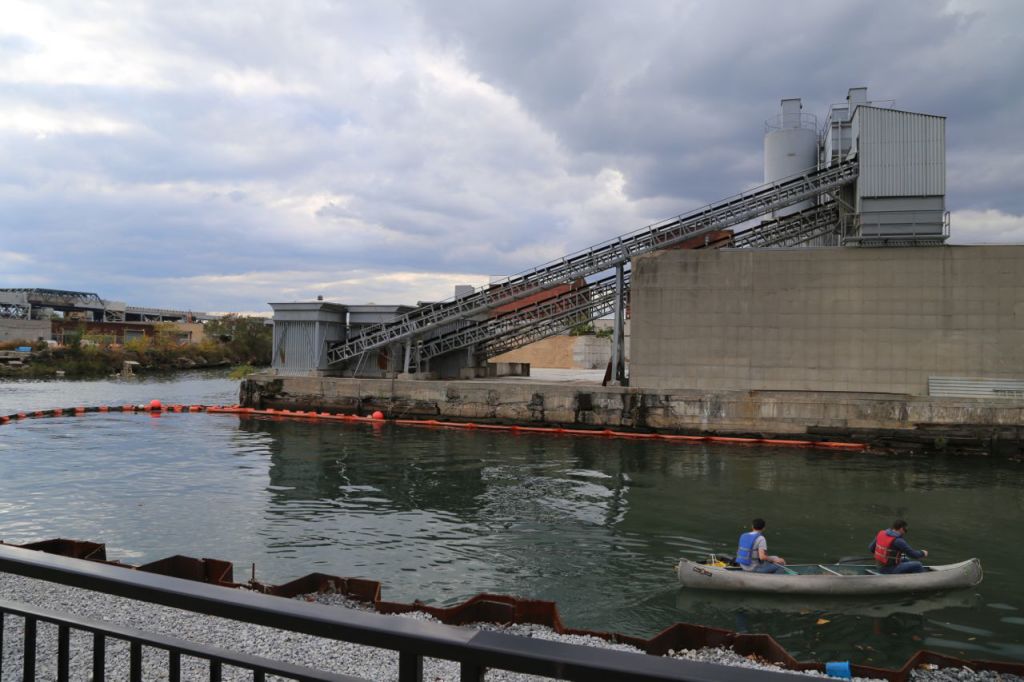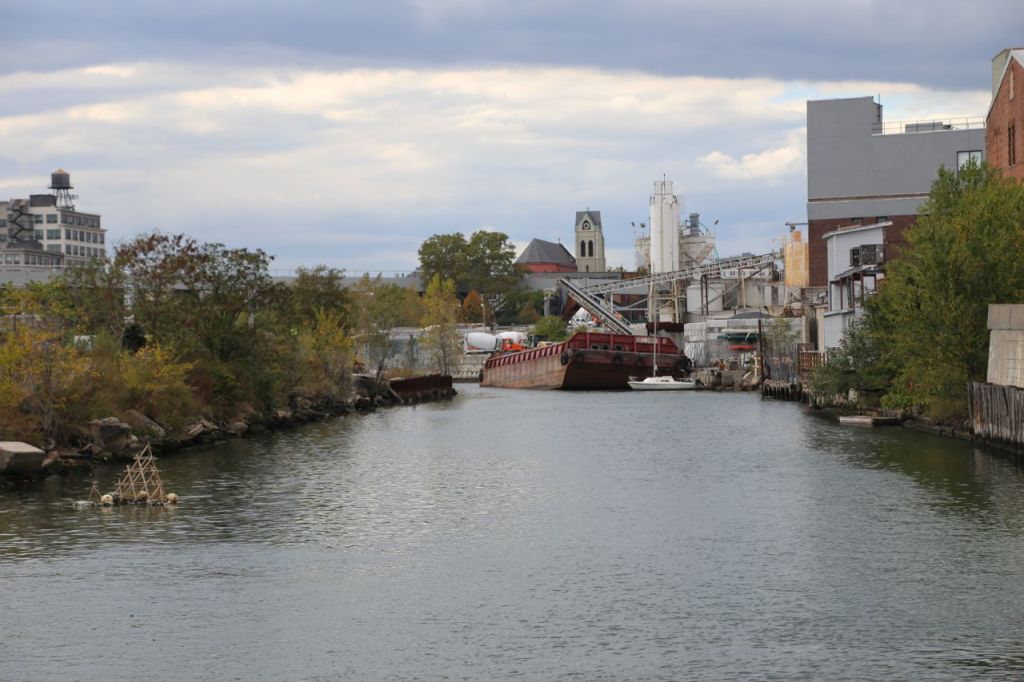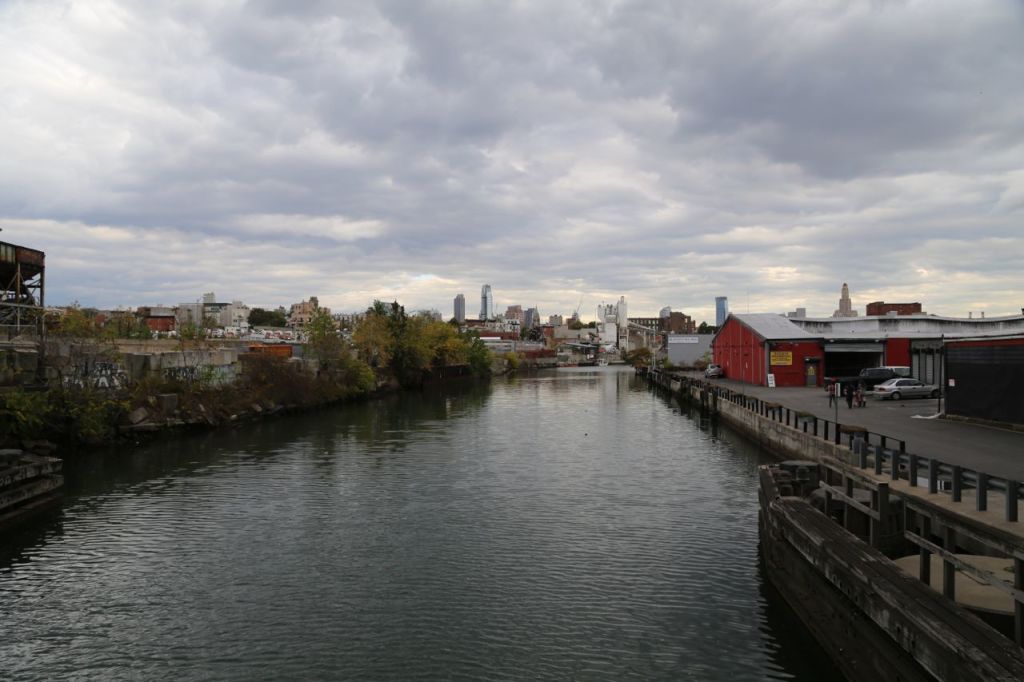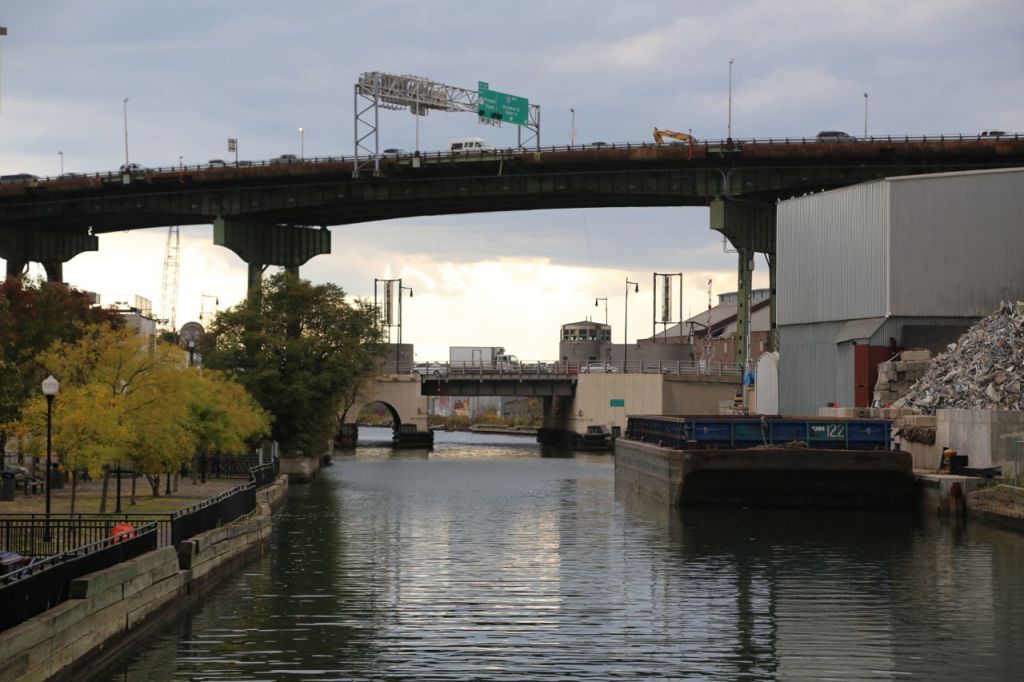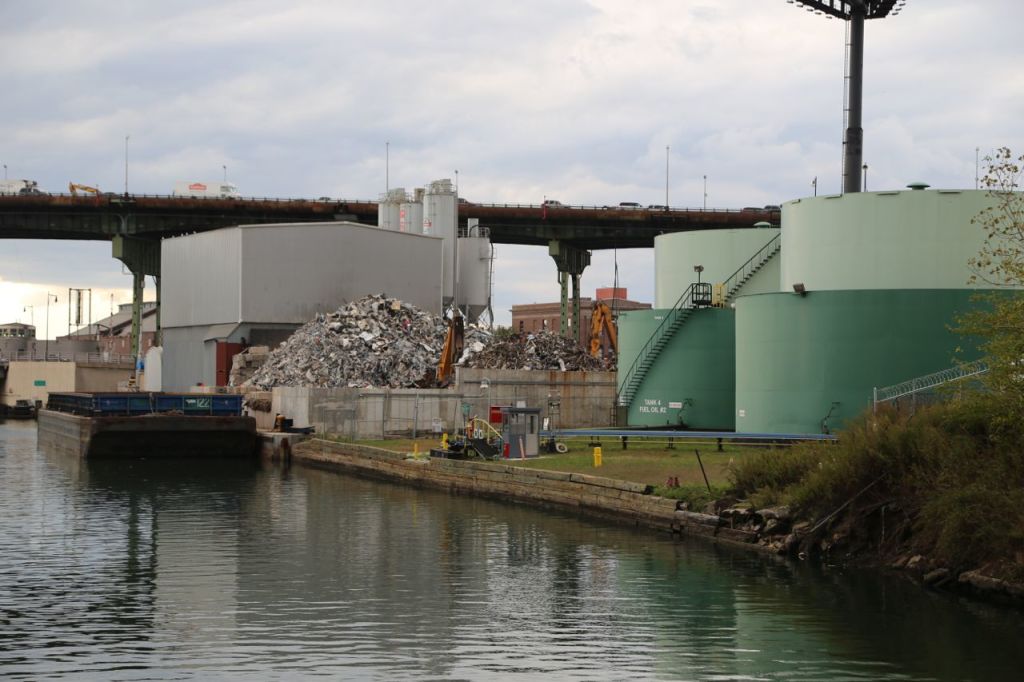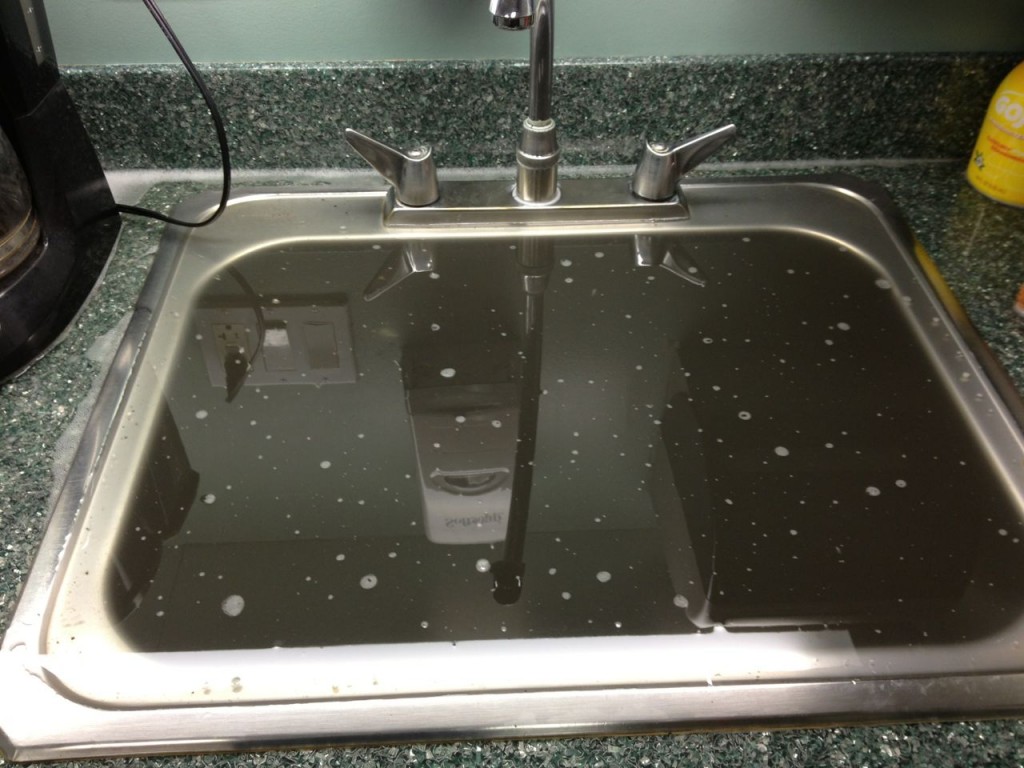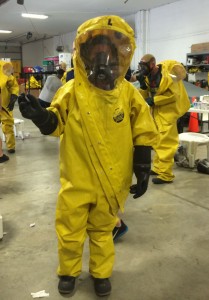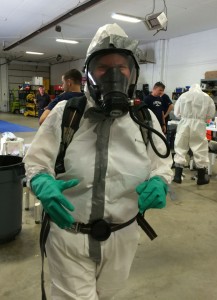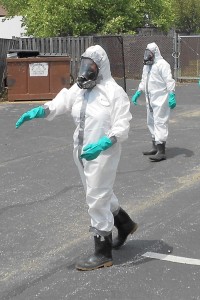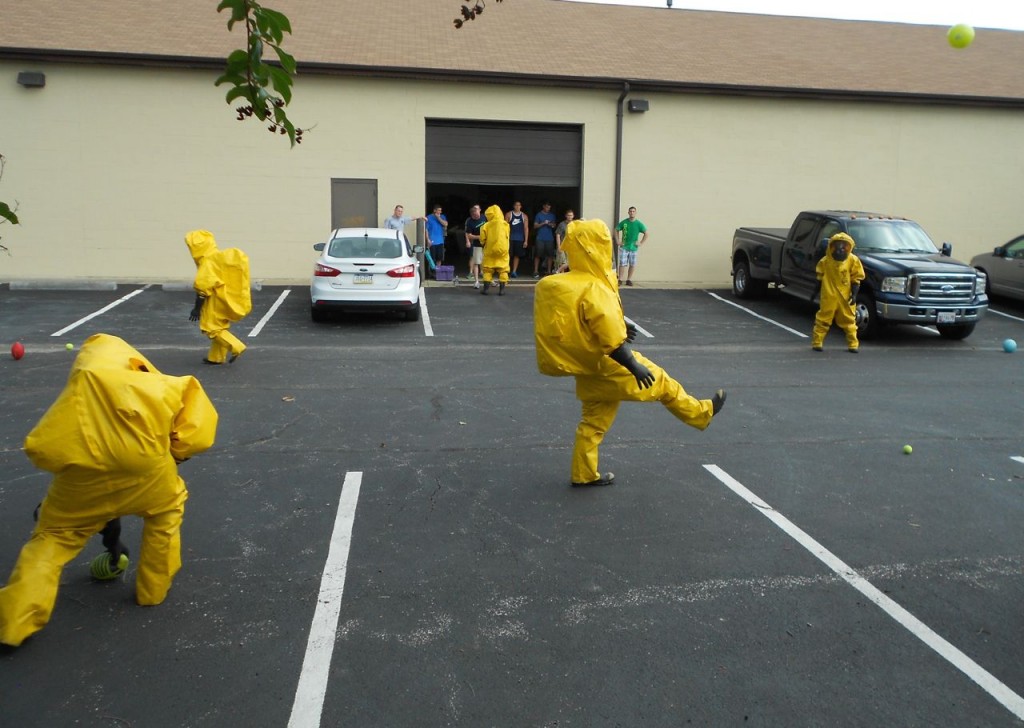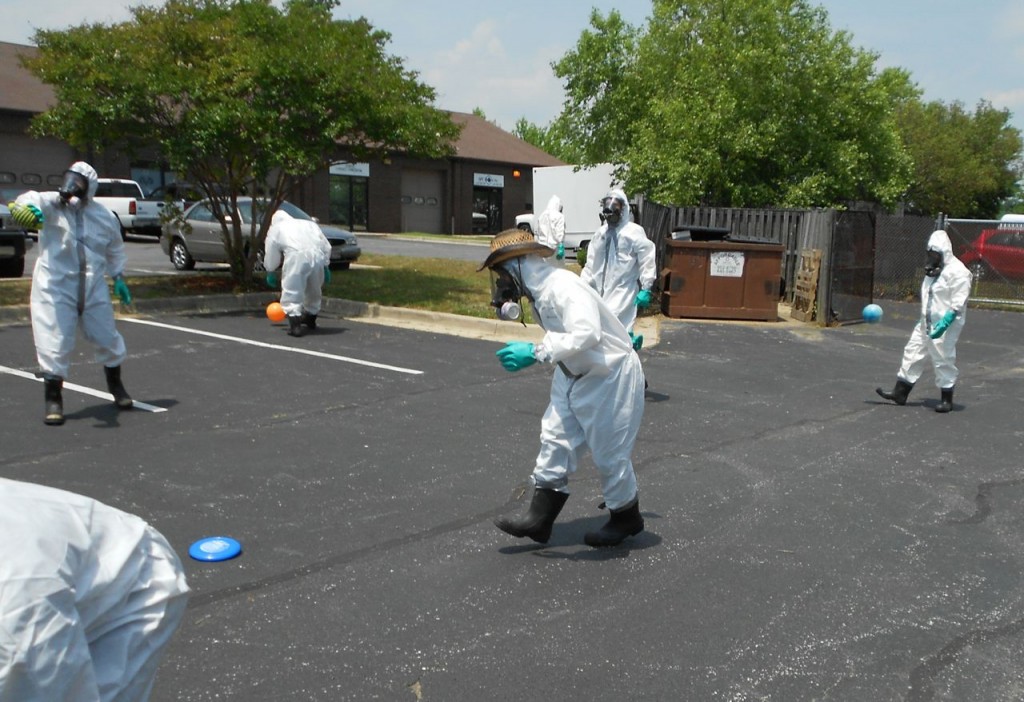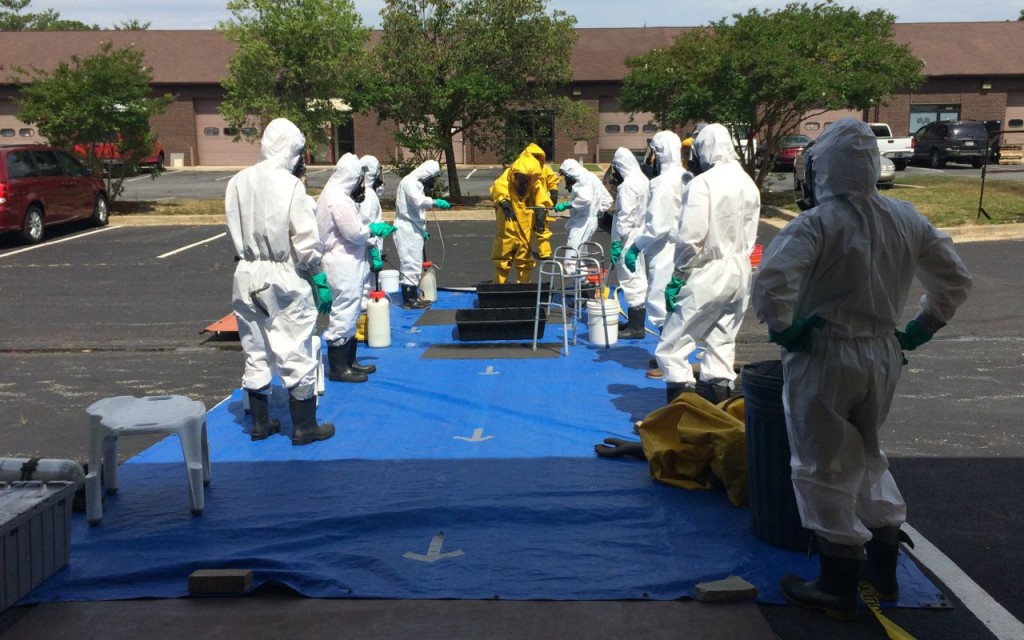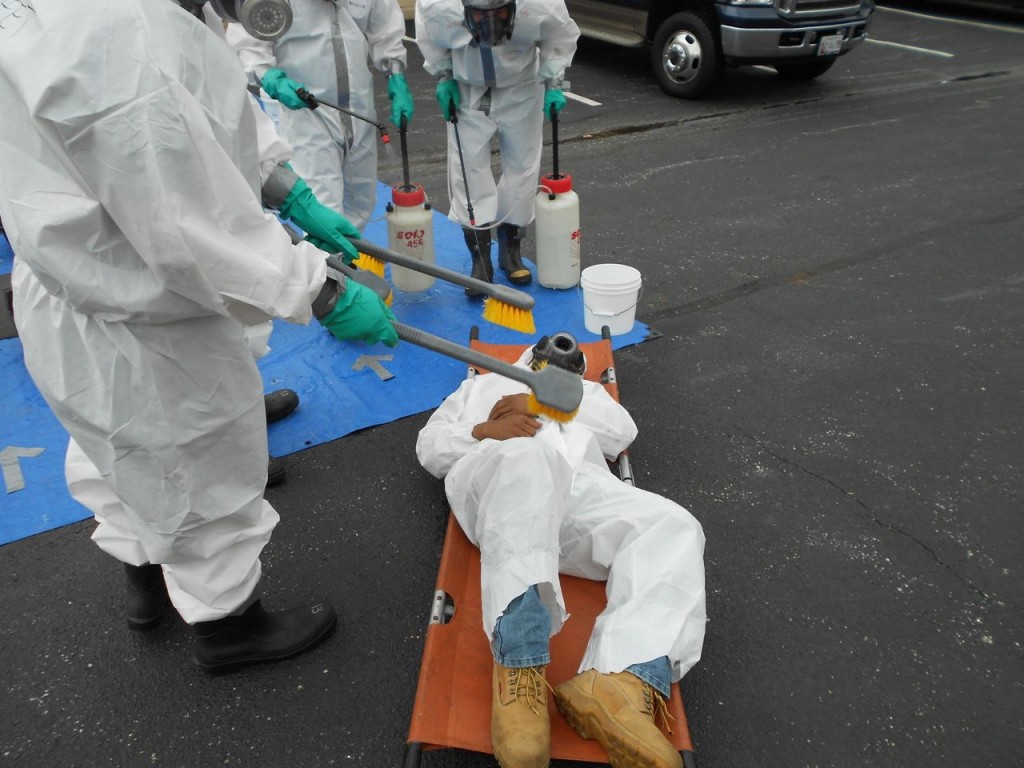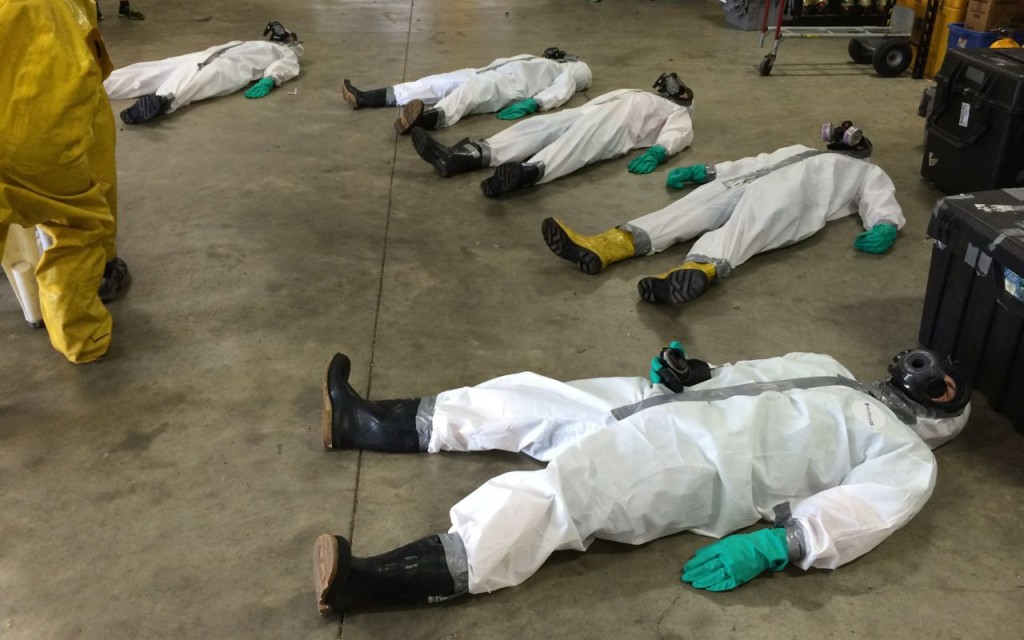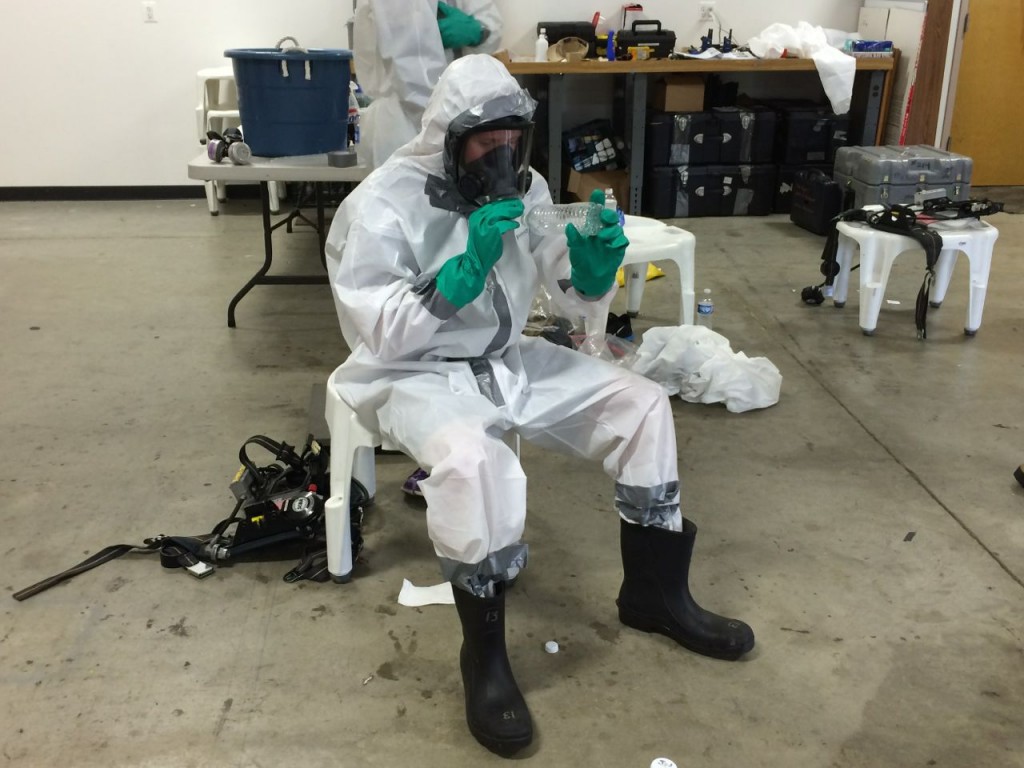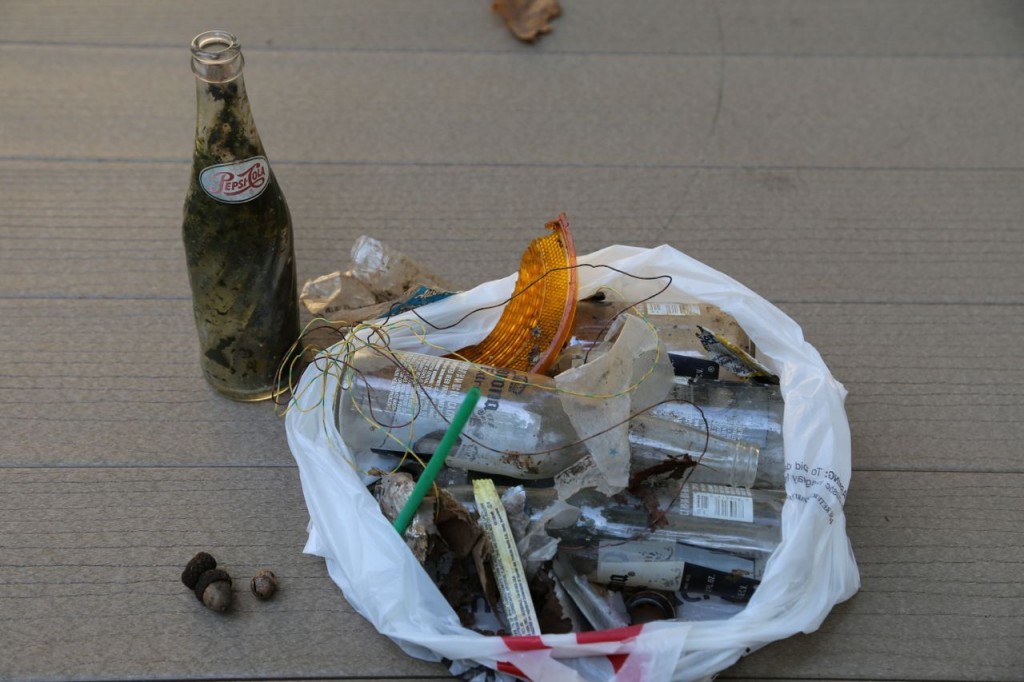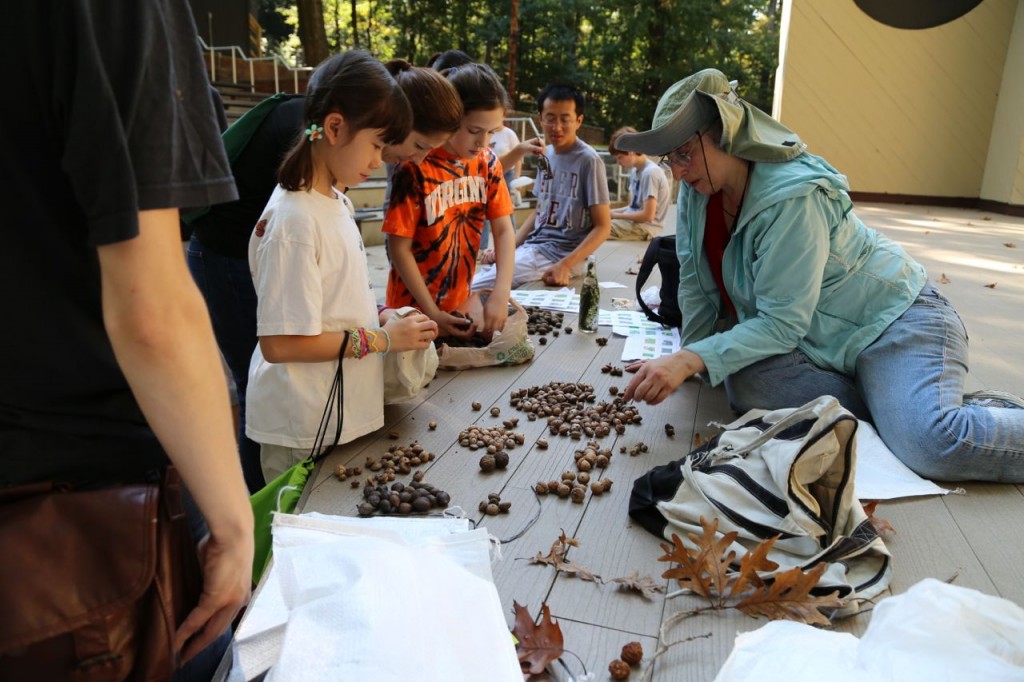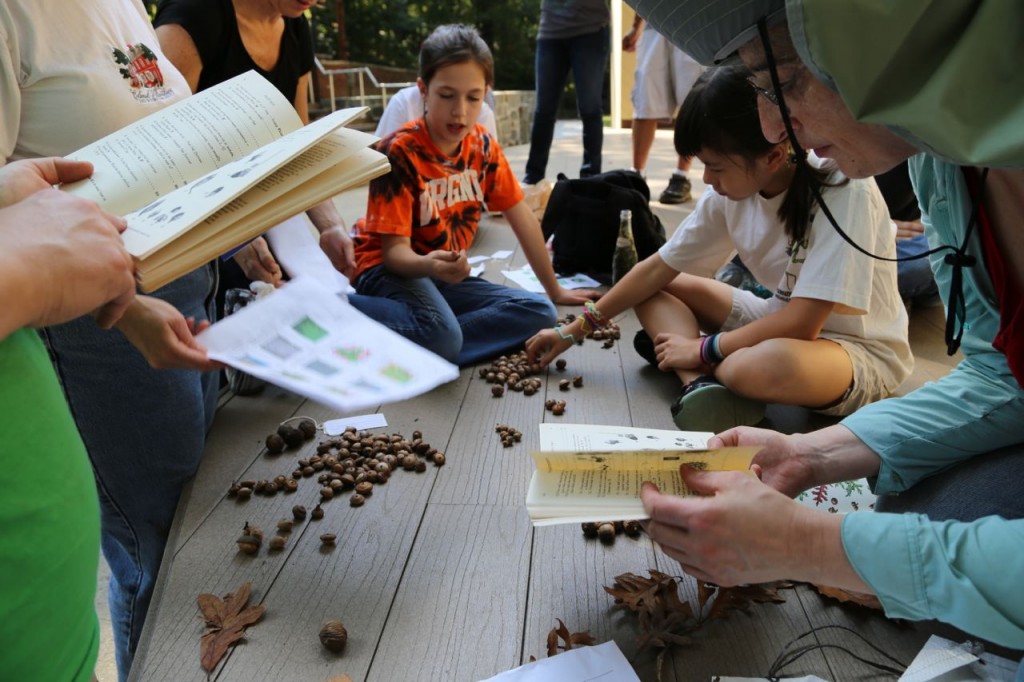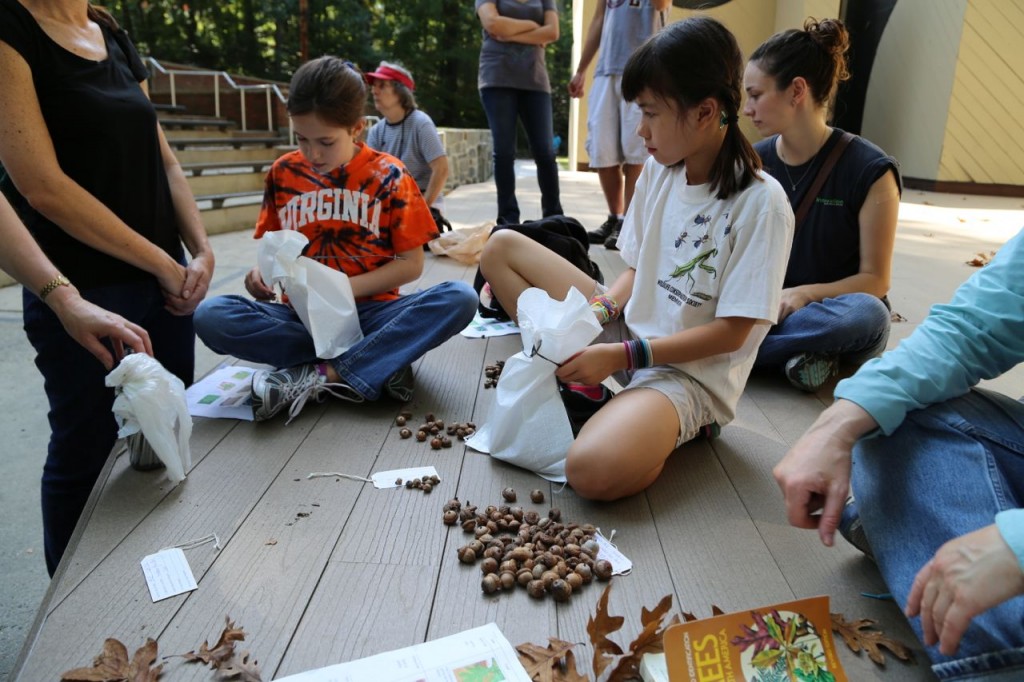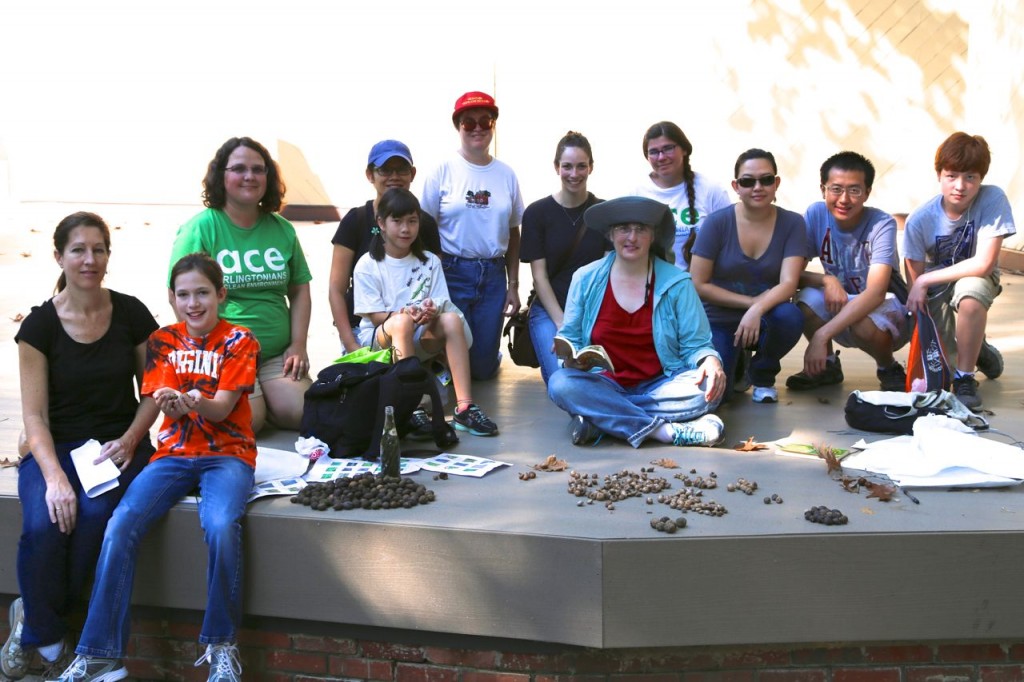Last week, I went for a guided walk with NYC H2O of historic Richmond Town, Staten Island to hear about the history there, in particular how the water affected the history. Historic Richmond Town is a neat little area as it is a park of historic buildings. If I read the information correctly, some of them were moved there to be part of the preservation area. There is a mill there that operated off the creek that runs by the area. Nearby and also part of our walk is Brookfield Park, which is a former landfill. From an environmental engineering perspective, it is nice to see what the landfill has become. Although it is not clear if remediation is ongoing, as the landfill was rather old, so it is not clear what engineering, if any, went into it.
Tag Archives: waste
Treasure in the Trash
Last week, I finally got the chance to tour Treasure in the Trash, a collection I had heard about a few years back and was obsessed with touring ever since. Treasure in the Trash is a collection of items that former Department of Sanitation of New York worker Nelson Molina found in the trash as he worked his route picking up trash. Only a very small percentage of items in the collection were found by someone else. Also, Mr. Molina worked in the same garage, the M11, during his career, so almost all the items are from the same area in east Manhattan. The collection is housed on the second floor of the M11 garage, which for structural reasons can no longer be used for vehicles (vehicles on only park on the first floor now), so the collection has expanded in the void.
Once trash is put on the curb, it is property of the city. Mr. Molina picked items out of the trash, but as the items were kept in the garage, he never kept them, so he never violated any rules. He would have had to have stopped his habit of picking items out of the trash if it had ever slowed him down on his route. However he clearly is fast in his work, and he is also seriously skilled at knowing which bags might contain items of interest for the collection. He was present during our tour, and he told us that his picking habit started when he was a child, and it clearly is a skill. While it would be easy to find the larger items to pick, we were all amazed at how he found some of the small items that were in bags.
Mr. Molina not only created the collection, but he curates it. The items were all arranged in collections of sorts. He retired from DSNY, but he still comes by the garage often to curate the collection. The collections are well done and arranged. I also enjoyed how he prominently displayed a poster for Open House New York, which arranged the tour, and a poster from the City of New York telling people to “Recycle More, Waste Less!”
The collection is amazing in its diversity, but it is really a statement about what we as a society throw away. So many things we buy now are “disposable” with the resources used to make them then just put into the trash when no longer desirable or useful. However with so many items, there are still resources that could be saved from the discarded item, if the item was discarded correctly. However in most places, it is difficult to discard of an item in a way that the resources could be retrieved from them. For example, metal recycling exists, but it is not always easy to get an item to a metal recycler. If you can though, you can actually make money from getting the metal to a recycler, like I did when I was renovating my house. [Side note: I don’t know the precise amount, but a decent amount of New York trash goes to Covanta Waste to Energy incinerators. After the trash is burned, Covanta’s process does capture metals to then send for scrap. However burning metals lowers the efficiency of the incinerator.]
Some of the metal in the collection though, like many other items in the collection, look like something, that someone else would eagerly buy. Some of the jewelry, china, and glass looked if not really valuable, good enough that someone would happily buy at a thrift store or on eBay.
Seriously, much of the collection features items that are the reason eBay was created and continues to thrive.
Then there are other collections that feature items that would be right at home in a museum of some type.
Then there were the items like old televisions, phones, and other electronics, that not only contain valuable resources like rare earth metals but also contain material, including those same rare earth metals, that are hazardous if they get into the environment. With most modern technology hardware, retrieving those valuable resources is difficult because of the way the items are constructed. Further, often the items are sent to developing nations, where people retrieve the valuable material to sell, but they work in ways that is dangerous to their own health.
Other items are funny, random, and weird. Some items made me wonder why someone had the item to begin with. Other items made me sad, like a cross stitch that featured what was clearly a bride and groom and said “Yvette and Lance – March 16, 2007.” I am just guessing Yvette and Lance’s marriage did not make it.
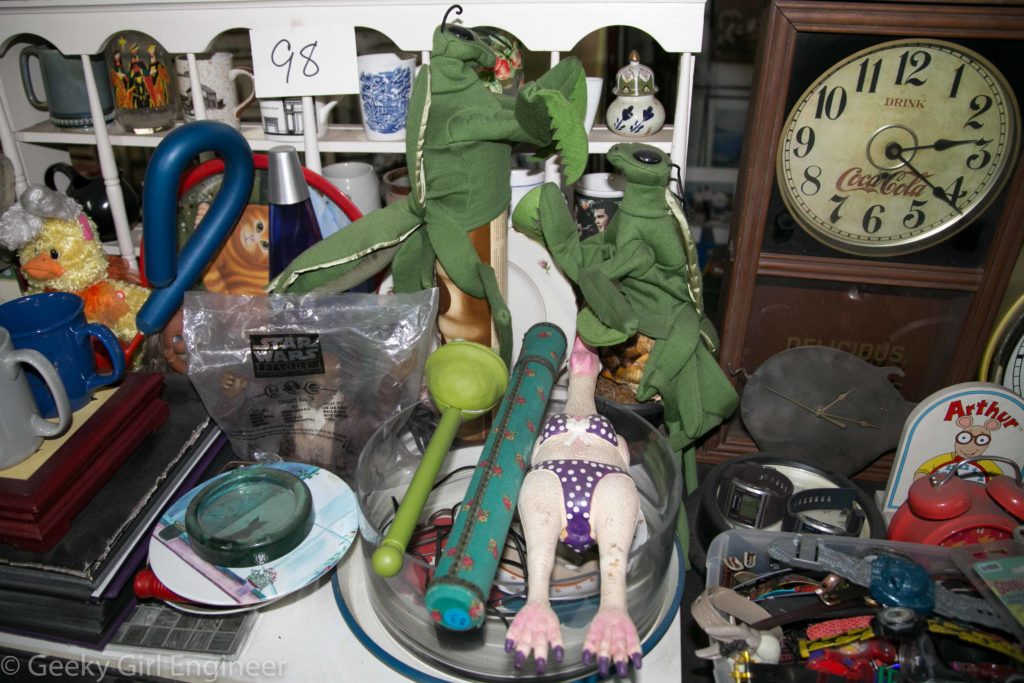
This was one of my favorite collection with the fighting praying mantises and wooden “rubber” chicken. On the left is a ThighMaster.
Then there was this gem that welcomes you as you walk up the stairs to Treasure in the Trash.
The place was amazing. If you ever get the chance, go tour it. Also, many thanks to Open House New York for arranging the tour, DSNY for letting us in, Nelson Molina for talking about the collection, and Robin Nagle, DSNY’s anthropologist in residence, for her introduction to the collection and whose book “Picking Up” about DSNY is well worth the read.
Freshkills Landfill Turned Park
This past weekend, I got to check an item off my bucket list when I got a tour of Freshkills, the former landfill that is being turned into a park. This is probably not an item on most people’s bucket list, but I have heard so much about the landfill that when I found out New York City Parks Department gives tours, I jumped to sign up. The vast majority of the landfill has been fully capped and vegetated. The mounds are dotted by the landfill gas collection system with gas wells popping up from the high grass at regular intervals. The wildlife has already moved in. There were butterflies flying everywhere in the grass, and birds were everywhere. We also saw a family of deer. The wetlands are lovely and evidently filled with wildlife. Also, the view from the top of the mounds is spectacular. It will be a while before the area will be completely converted to a park and open to the public, but the transformation already is incredible. As an environmental engineer, I am incredibly happy to see it and proud of my profession that did it.
Marine Waste Transfer Station
I got the chance to tour New York City’s brand new Hamilton Avenue Marine Transfer Station. It is scheduled to open next year and is located on the Gowanus Canal in Brooklyn. It will be the transfer point for household waste from ten Brooklyn community boards. It is the first marine transfer station there. All other waste is moved on trucks and rail. It is very impressive. Once operational, it will operate 24 hours a day and six days a week (no Sundays). Currently waste from the area goes to waste to energy incinerators. There will be 12 sanitation workers per shift plus one supervisor.
Trucks enter the building and are first weighed on a scale.
Once inside the building, the trucks back up to the edge of the floor and lower their trash onto the mixing floor below.
Front loaders and other equipment on the floor below are used to push the waste through openings in the floor into containers waiting below the mixing floor.
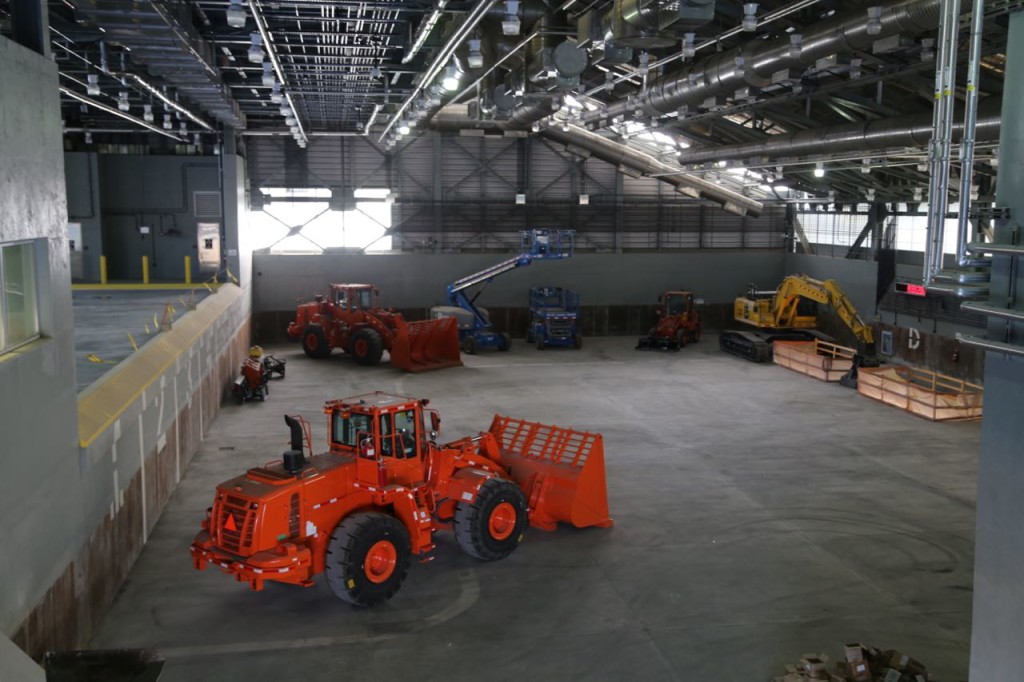
Waste mixing floor with equipment to push waste into containers, the elevated floor on the left is where the trucks will lower their loads
The openings in the mixing floor are only as big as the standard containers that will accept the waste. The station aims to put 20 tons of waste in each container.
Once the container is full, equipment is then used to place a top on the waste container.
The containers are moved the loading area to the topping area to the storage area on rails.
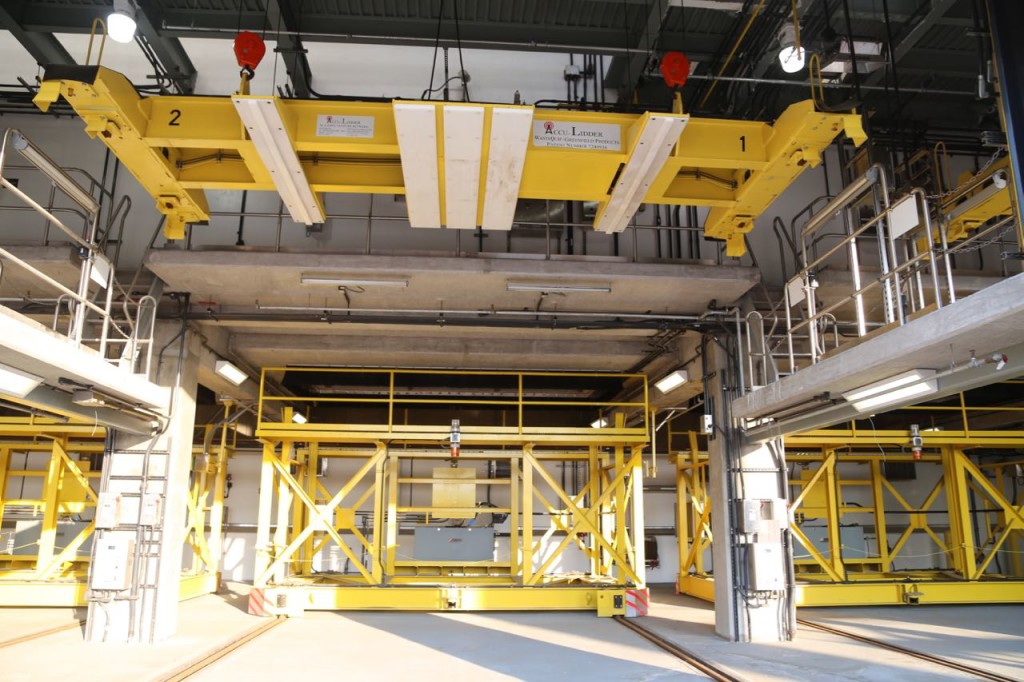
Loading bay, in foreground are toppers and behind, with yellow frames, are where containers will sit to receive waste
Cranes that are also on rails are used to move the containers from the building to stacking areas to finally the barge.
There are two cranes, but for safety, only one is used at a time. The other one is a backup during maintenance.
Sampling Fish
Recently for work I got to help out in the field taking samples to quantify environmental contamination. Some of the samples we were taking were fish tissue to measure the levels of polychlorinated biphenyls (PCB) in them. The fish live in a river that was contaminated decades ago. The sampling results will be used for fish advisories and also to determine a clean up plan.
Sampling fish starts with the really fun part, which is cruising on a small electrofishing boat. Electroshocking the fish allows you to catch them alive and throw back any fish we didn’t want. We had target fish we were trying to catch to sample, and those were the only ones we kept, and we only the number of target fish we needed. The electroshock sort of stuns the fish but doesn’t kill them. The electrofishing boat has two long poles with anode wires hanging off of them protruding from the front of the boat. There were more wires hanging from the bow of the boat, and those are the cathodes. The electricity flows from the anodes to the cathodes. We stood at the front of the boat in rubber soled boots with nets extended waiting to catch any fish stunned by the electroshocking. Netting electroshocked fish is not actually as easy as it sounds. Some of the fish are more stunned than others, so some fish seem slightly confused but then swim away. Also, some were stunned but at a depth too low or cloudy for us to catch or see. According to the boat’s captain, the water had really low conductivity, which was making it difficult. Since we had target fish we were trying to catch, I, naturally, kept catching fish we didn’t want. I threw a lot of fish back. Still, a day on a boat catching or not catching fish was a wonderful change from the cubical I normally work in. Also, I learned that you really need polarized sunglasses when out on the water.
Once we got the fish to shore, the biologist took over. The fish were weighed and their length measured. He took a a sample of their scales from a standard location, and those scales were going to be used by a laboratory to determine their age. Evidently scales can be used to age fish in the same manner tree rings age trees. WARNING: If you are uncomfortable looking at the insides of fish, do not read any further. You should probably not eat fish also, if you can’t look at an uncooked one.
The rest of the scales were then scraped off. The fish were then cut. Only the fillets were used for sampling. The part of the fish used for sampling can differ depending on what the exposure pathway being examined is. We took two different parts: the filet, which represents what a human would normally eat, and also the fillet with rib meat. The rib meat is normally not eaten, but it would have more PCBs in it, so using it in the sample would represent a worse case scenario for a human consuming fish.
I also learned a bit of fish anatomy during the sampling. The biologist was also sexing the fish.
We weren’t necropsying the fish, but we still got a look inside, including sometimes as to what it had eaten recently.
We sampled quite a few fish, but it was for science and to benefit the community.
Waste to Energy Plant
Last week I got the chance to tour a waste to energy plant. The plant receives non-hazardous, household garbage from municipalities, consumer businesses, government agencies, and international ports. It burns the waste and converts the energy given off during the burning to electricity, which is then put into the power grid. Some of the waste that comes from government agencies need secure destruction, and at the plant, the waste is put directly into the feed stream and burned, so as to allow the needed secure destruction. The waste from international ports, such as nearby airports, must be burned to prevent any pathogens entering the country that may affect agriculture, and so it also is fed directly to the feed stream. Interestingly, the municipalities that send waste to the plant discourage their residents from putting yard waste into the trash. Besides being environmentally unfriendly because yard waste can be composted and nutrients returned to the earth, the yard waste is also not good for the waste to energy process because it produces nitrogen oxides (NOx), which forces the plant to put in more pollution control.
There are 88 waste to energy plants in the US, and 45-46 are Covanta’s, the owner and operator of this plant that I toured. The plant receives about 1000 tons garbage/day and after burning it, produces about 300 tons ash/day, which is 10-15% fly ash and the rest bottom ash. Thus, the plant achieves about a 70% weight reduction and also a 90% volume reduction. The fly ash is sent to monofill, which is like a landfill but only accepts fly ash. Fly ash can be used in making concrete, so evidently there is currently research being done by both the concrete industry and various waste to energy plants as to if this fly ash can be used for concrete and thus also be reused.
With the exception of the trash that has to go directly into the feed, when it first comes to the plant, the trash is placed on floor where humans look at trash to remove anything that should not be going into the boiler. For example, inert material shouldn’t go into the boiler because not only does it not burn, it is also a heat sink and reduces the efficiency of the process. The trash is then put into a storage pile to be eventually fed into the boiler feed. A large claw moves the trash to piles, mixes the piles, and then moves trash from the piles into the boiler feed.
The trash is sent to one of three boilers, each of which has six cells. The boilers burn the trash at 1800-2000°F (1300K). The boilers are initially heated up with diesel fuel, but then the trash sustains the burn. However everyday diesel fuel is used to test the burn.
The heat from the boilers is used to heat water to turn it into steam. The water is in a closed loop system, but they use about 20-25,000 gallons of water per day due to loss. [They use another 200,000 gallons/day for the cooling tower and are exploring with the nearby wastewater treatment plant using treated wastewater for this.] The water goes through a reverse osmosis treatment for purity, so nothing damages the turbines and the rest of the system. The produced steam is superheated but drops to 700°F before entering the turbines. There are two turbines with 14 stages. The steam turns the turbines, and that motion is converted into electricity in the generator. They produce 14.5 MW per turbine. Because of the work the steam does on the turbine, the steam enters the turbine at 600 psi and leaves in vacuum in a 10 ft length.
All the gases that leave the boiler pass through a series of air pollution control units. Ammonia, lime slurry, and carbon are used for pollution control. There are probes in the system to sample flue gas for pollution control additives that are needed. The treated gas then goes to a baghouse where particulates are captured. The air is below 300°F before going into baghouse, so it has cooled quite a bit.
The ash from the boiler is sent through a unit to remove all metals. The ferrous metals (attracted to magnets) are separated from the rest of the metals, and all the metals are sold for scrap.
The whole process is monitored in a control room by one or two people. I was amazed at how simple the process was. I, the environmental engineer, was of course geeking out at the whole thing, but it was a really cool process and efficiently run.
Finally here is a very short video of a few scenes from the plant. This includes waste being loaded into the feed, the fire in the boiler, and bottom ash entering the metals separator.
Gowanus Canal
Last month while in New York, I spent some time walking around Gowanus Canal because I’m an environmental engineer, and I couldn’t resist an opportunity to visit a body of water, infamous for being incredibly polluted. The Gowanus Canal is a Superfund site due to contamination with polycyclic aromatic hydrocarbons (PAHs), volatile organic contaminants (VOCs), polychlorinated biphenyls (PCBs), pesticides, and metals. However, the Gowanus Canal is also polluted with more ordinary pollutants such as bacteria from untreated wastewater from combined sewer overflow outfalls and other urban pollutants from surface runoff (and possibly illegal outfalls). The area residents are understandably pushing to get the canal cleaned up quickly, and the cleanup is a joint effort between the city, state, and federal government. The area around the canal is an interesting mixture of industrial, art galleries, and up and coming residential. It is actually a nice area. There is a Whole Foods Market next to the canal that has a nice little canal walk on the property, which features signs that say “This is the greenest supermarket in New York State. No smoking, please.” I will take them at their word about being the greenest supermarket, as I did notice solar panels and wind turbines in the parking lot. However I still had to laugh at the irony of the sign. On the bright side, the Gowanus Canal is not so polluted that should someone smoke near it, it is not in danger of catching on fire, like the Cuyahoga River did in 1969. While I was walking along the canal, I spotted a small boat with two people who seemed to be monitoring the water and also two people in a canoe. I guess the canal is safe to canoe on, if you just make sure you don’t touch the water to your skin and most definitely don’t let any get into your mouth, nose, eyes, or any other orifices. The canal does not look that polluted. There are areas with floating trash, but there are very few places where I saw a sheen. When I was there it did not smell either, but evidently especially in summer, it can smell. However, it is a good example of how appearance is not a good way to tell if something is polluted. If you want to read more about the Gowanus Canal, this article in Popular Science is pretty interesting.
When an engineer gets to comment on building maintenance
One nice thing about where I work is that we get to fill out surveys about how we like the building we work in and comment on it. I have my doubts about how much they act on the survey results, or how much they pay attention to the comments if an employee bothers to give comments, but hey, it’s a great place to vent. I actually for the most part like my building. It is relatively new and doesn’t have the problems that many older buildings that my employer has has. It is kept clean and and looks nice. One big problem I have with it is the same that I have with almost every other office building: the temperature is set at a temperature that is comfortable for men not women. By about 11 am, once the HVAC has fully gotten the ambient air to the set point (as opposed to earlier in the day when it is ramping up after having been off during the night), the vast majority of women are walking around in sweaters, jackets, or blankets that all of us keep at our desk. [Spoiler: When I rule the world, I will dictate two things. Office buildings will be set at temperatures that are comfortable to women, not men. Also, public restrooms will be designed better. In particular, the stalls will be longer so that women don’t have to climb on the toilet to close the stall door. Truthfully there are many things that need to be improved in public restrooms, most of which I and many other people have covered is this somewhat comical, somewhat serious past blog post.] However, the building I work in has some of the worst plumbing issues I have ever seen, especially for a building that is less than ten years old. Ironically it has LEED certification, but whoever certifies it appears to ignore the obvious water wasting issues it has, as I detail below. I’ve decided to share below the comments I gave in the building survey, not because it will really accomplish anything, just as a way to vent and possibly to serve as a warning why if you let an engineer comment on a building with design and maintenance issues, you may get more than you wanted. Thus, my full comments are as follows.
With all the dual flush toilets, only one flush button actually works. With some toilets it is the half flush button, with some the full flush button. However whether or not the working button is actually whichever button it appears to be is unclear, or if they have possibly all been disabled and all converted to full flush. They constantly run. Almost every time I enter a restroom, I have to push the flush button on at least one toilet to get it to stop running. The restroom auto soap and water sinks are like sink roulette. Which sink will give me soap? Which sink will not continuously squirt soap at me? Which sink will give me water? It takes forever to get repairs done on issues in the pantry/kitchens. It took them two weeks or so to put a new aerator in the sink faucet. A part that can be bought at any time at Home Depot. It is not special. Maintenance blames pantry sink issues on reasons that are not the problem. On numerous occasions, water has come bubbling up from the drain pipes into the sink. Sometimes so much water has bubbled up that the sink has overflowed with disgusting brown wastewater. Then maintenance posts signs saying not to put coffee grounds down the drain as that caused issue. While coffee grounds will cause a sink with a bad garbage disposal to not allow the sink to drain (and putting coffee grounds down the drain is a bad idea), it will not cause water to flow up from pipes below. (I’m a chemical engineer I can prove this with fluid dynamics equations!) There is obviously some issue with the drain pipes below our floor, which any competent plumber or chemical engineer could tell you.
While there was no place to attach photos or videos, below is a photo of the backed up kitchen sink and video of it overflowing.
HAZWOPER Training
Last week I attended 40 hour HAZWOPER training. HAZWOPER, an acronym for Hazardous Waste Operations and Emergency Response Standard, is OSHA mandated training for employees who may potentially be exposed to hazardous substances and who are engaged in cleanup operations or other certain other activities involving hazardous waste. Normally I work in an office, and the closest I come to hazardous materials or waste is sitting at a computer and analyzing data from hazardous waste sites. However, there is a possibility that I may sometimes be asked to go to a site where HAZWOPER training would be necessary, and I had an opportunity to take the training, so I did.
HAZWOPER training includes topics such as basic chemistry, toxicology, biology, radiation, environmental science, analytical sampling, and law and regulations. Truthfully, I could have taught a good portion of the training. It also includes hands on training with some of the sampling methods and instruments that are used in the field. Personally, I think playing with instruments and sampling materials is fun. As part of the training, you are required to get dressed in various personal protective equipment (PPE) that would be required under various circumstances at sites. In general, you look rather ridiculous in the PPE, but of course PPE is not supposed to be fashionable or make you look good, it is supposed to protect you from hazardous materials that could kill you or cause injury or illness. What PPE does not do, is keep you cool. It was in the 90’s °F when we were dressing in the PPE. While the suits protect you from most hazards, ironically they can cause potential health hazards if you over heat. There are different levels of PPE that are used depending on what the potential hazards are. The most protective is Level A, which is a fully encapsulating chemical-protective suit with positive pressure, full face-piece self-contained breathing apparatus (SCBA), inner and out gloves, and boots.
The next level, Level B PPE, is slightly less protective and includes chemical-resistant coveralls instead of the fully encapsulating suit, as well as SCBA, inner and outer gloves, and boots.
The next level, Level C PPE, is less protective still. It includes an air purifying respirator instead of SCBA, but other than that is fairly similar to Level B.
There is one final level, which is Level D PPE, which is minimal protection from physical hazards but does not include respiratory protection. This may sound strange, but if it is hot, Level A is actually easier to wear than B or C. The fully encapsulating suit is roomier, and the compressed air is continually blowing through your mask and then through the suit itself before it exits an exhaust vent. This air flow helps to cool you. In the chemical resistant suit for Level B and C, I just felt like a turkey that had been baked in a cooking bag. Side note, the SCBA tanks we used were made of a composite material and weighed about a third of the weight of the metal SCUBA tanks I have worn before. Also, for as cumbersome as it was to get dressed out in all the PPE, I think it was easier to dress in and walk around in the PPE compared to the SCUBA drysuit I was wearing a month beforehand while SCUBA diving Silfra. Obviously once underwater, the tank weight is negligible, and the drysuit becomes less cumbersome, but above water, they are really difficult to get into and move.
For HAZWOPER training, you don’t just have to get dressed in the different levels, you need to get used to actually moving and doing various tasks in them. Hence, when we first wore them, our tasks were to play with balls, as one would normally do at a hazardous waste site.
Note in the above photo, the person in the center is wearing proper head protection in the form of a straw cowboy hat. No, he actually just being fashionable. Wearing hazardous material PPE is no reason to not be fashionable.
We also did a few exercises to practice tasks at a hazardous materials site, including decontamination. There are set steps and tasks to make sure decontamination is done properly. The first pair of people wash the worker, the second pair wash the worker again, the third set inspect the cleaning, and the fourth set help the worker out of the PPE. Notice the use of walkers for the worker to hold onto while the decontamination team washes the boots. There is no dignity in any of this.
We also practiced emergency decontamination of an incapacitated worker. We actually did not finish this task. This was due to the fact that after they started decontaminating him, someone loudly said, maybe we will have to do mouth to mouth. At that point, the incapacitated worker suddenly regained conscienness and took off running.
Since this was practice and not a real situation, we did a few things you can’t do on a real site. For example, the decontamination team stayed inside when not needed outside and did various things to stay cool. One thing that we did was lay on the concrete floor because the concrete was cooler than the air, and it absorbed some of your body heat. Sure, we looked like casualties at a hazardous waste site, but it worked and helped keep us cooler.
We also took “hits” of the compressed air from the SCBA. The full face masks we wore were interchangeable for either air purifying filters or for the hose from SCBA. In between tasks, we didn’t wear either. However, we would attach the SCBA for short periods of time because the compressed air blowing into your mask helps to cool you.
Another thing that should never be done at a real site was drinking water through the mask via a straw. Actually it might be acceptable to do this, assuming someone with clean hands put the straw in the bottle and then into your mask. It is not acceptable if you are doing this with your gloves.
For as hot as I was while in some of the PPE, I still had fun. I was out of the office, and that in itself was fun. Also, I learned a bit, and that is always fun.
Collecting Acorns
This morning I joined several other members of Arlingtonians for a Clean Environment (ACE) to collect native acorns and other nuts in Lubber Run Park. The nuts are given to Growing Native which then donates them to state nurseries in the area to grow and plant to restore watersheds. That was the plan at least. Most likely due to the weather, there were not that many acorns, and those that had fallen had already been claimed by squirrels and other animals. Most of us ended up picking up a bunch of trash as we wandered through the park. In fact below is my haul. I make a much better trash collector than a squirrel. I found one viable acorn, a bunch of trash and recyclables, and one archeological find (sort of), a vintage Pepsi bottle.
Luckily other participants did much better than me. Overall, we had a pretty nice haul.
Then all the nuts had to be sorted though. It was a group effort to try to identify which type of oak tree produced the various acorns. Even consulting the books, we were still sort of guessing at some of them.
We sorted them as best we could, then bagged the various type acorns and other nuts separately to give to Growing Native.
Hopefully at least some of the collected nuts will be viable and produce saplings. At the very least, it was a nice couple of hours spent in a nice park, and we removed a bunch of trash.

